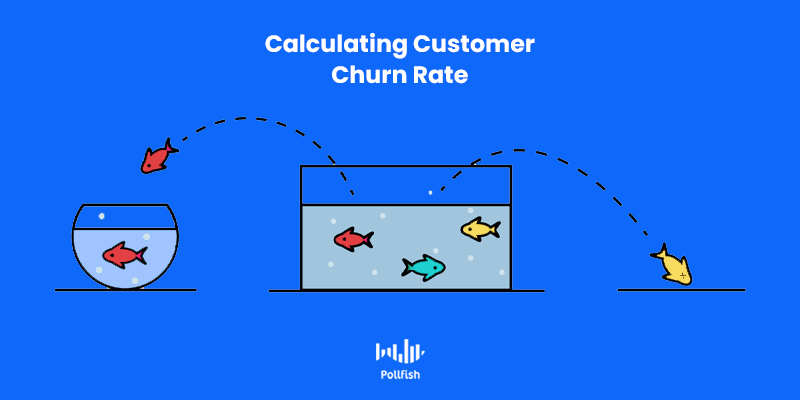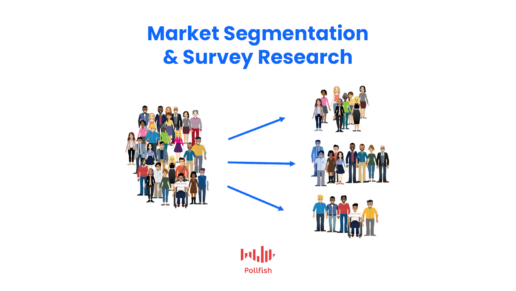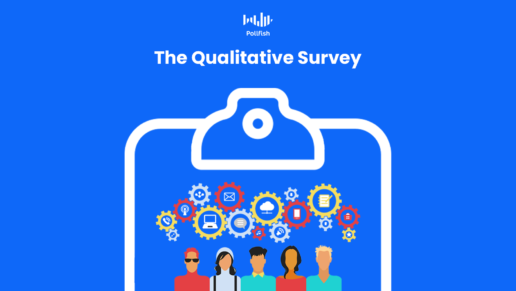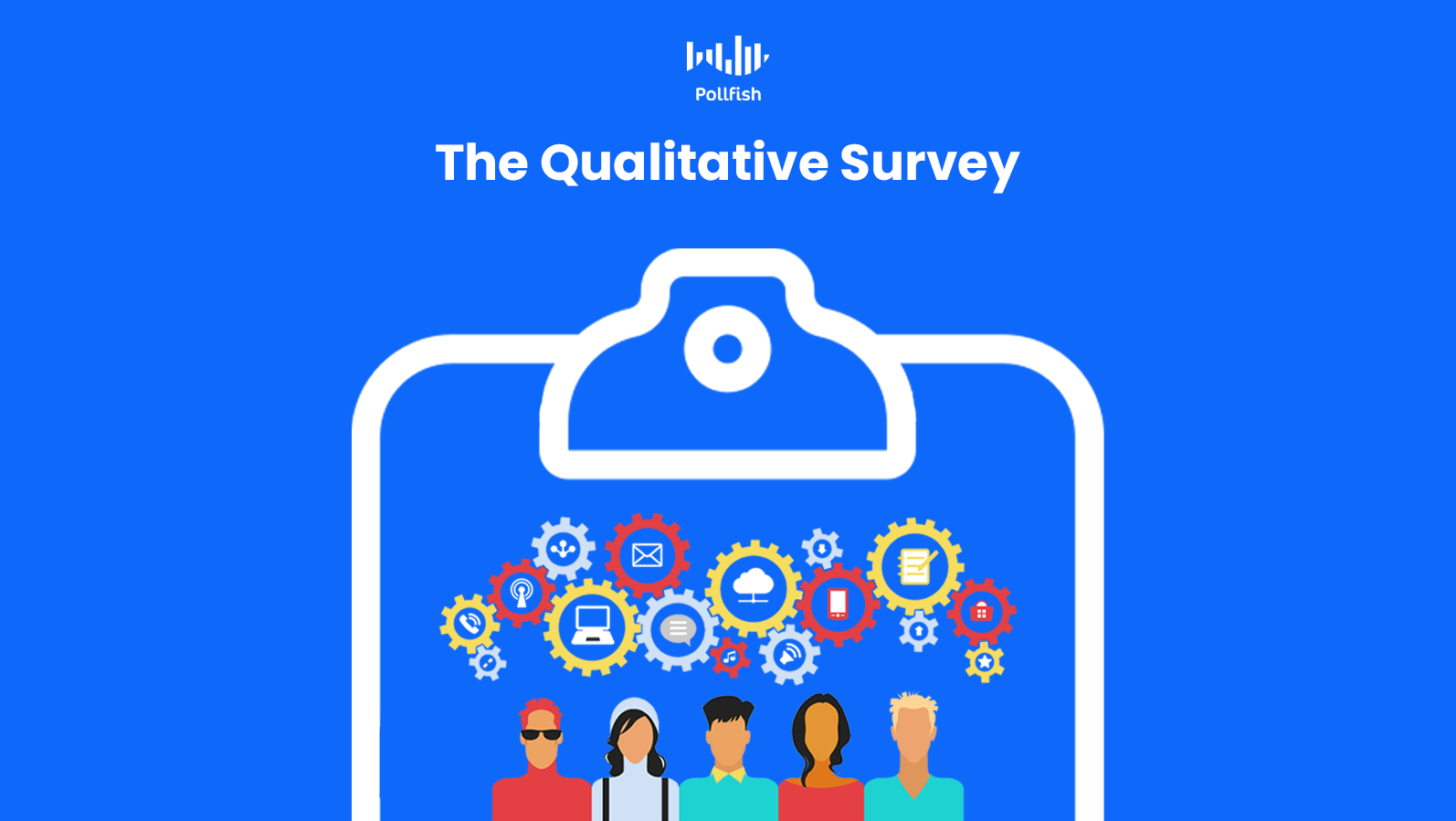Mastering Survey Sampling Methods for Consumer Intelligence
Mastering Survey Sampling Methods for Consumer Intelligence

Survey sampling methods are a crucial part of the survey research process, as the aspect of sampling is more than just a data collection practice.
This is because in order to glean any valuable insight from surveying, the respondents must be as representative of the study’s target population as can be. The correct survey sampling method can make this possible.
When conducting survey research, there are several sampling methods researchers can leverage. In order to apply the correct method, there are certain things you need to establish. This article delves into survey sampling methods, including the considerations to take before settling on a sampling method for your research needs.
Defining Survey Sampling Methods
Survey sampling methods denote the types of techniques used to select participants from a target market (or any target population) to take part in a survey sampling pool.
In survey research, the sampling pool is the group, or “pool” of targeted respondents who participate in a survey study. This sampling pool must accurately represent the targeted subject population.
It is important to have a group of people who will participate in the survey and be able to represent the whole target population. This group is called a “sample".
Settling on the proper sampling pool is known as sampling, which is critical to surveys, as it makes up the foundation of the survey campaign.
Why Survey Sampling Methods are Necessary
The main goal of surveys is to gather accurate information about a particular population. As such, they would be futile if they insufficiently accounted for the participants that they’re set on studying.
Survey sampling is necessary, as sampling provides a potent means of extracting and analyzing a targeted subset of a population. Even when researchers zero in on a subset, it is still virtually impossible to study the entire population of a targeted group.
The reason is twofold and fairly straightforward: not all members of a particular population will be exposed to a survey, and out of those that do, most will not be willing to spend time filling out a survey.
As such, researchers turn to survey sampling methods, so that their sampling pool best represents the population of researchers’ interest. With the right method, researchers can make well-informed inferences about their targeted population.
Sampling reduces the sampled respondents, which lessens both the workload and costs associated with a particular survey study. However, researchers have to find the correct balance of participant involvement to accurately ascertain associations between variables.
Determining Your Target Population: The Precursor to Survey Sampling
Effective survey sampling occurs when the researchers have established the population subset which they intend to study. As such, you should begin any survey sampling campaign by defining your targeted population.
If you need to conduct surveys for a business, you should always aim your studies on your target market (when not observing your competitors). This is because the target market is the group of individuals most interested in your sector and most likely to buy from you.
In this regard, it is also important to conduct market segmentation of your target market, as your target market is made up of several consumer segments. Surveys are a powerful tool for segmenting your target market.
But again, you must properly sample your population before conducting any survey research. There are several ways to approach survey sampling.
Probability (Random) Sampling Vs. Non-Probability Sampling
There are various kinds of survey sampling methods, which fall under two main classifications: probability and non-probability sampling. Businesses, governments and other entities can apply either one or both of these methods for their research needs.
Before navigating the multitude of survey sampling methods, it is key to be able to differentiate the two main categories of sampling. This will put the subcategories, i.e., the specific sampling methods into sharper perspective.
The following explains the core aspects of the main types of sampling methods.
Probability Sampling:
Also called random sampling, this category initiates with a full sampling of all the individuals qualified to be in your sample. This main method grants all eligible participants the chance to be used in the sample. In this way, your sample will be able to allow you to make generalizations from your survey results.
The methods that fall under probability sampling can be more expensive and take up more time than their non-probability sampling counterparts.
The main advantage of using probability, or random sampling is that the chosen sample is more representative of the target population. As such, this kind of sampling fosters credible statistical conclusions.
There are five main types of probability sampling methods: simple random sampling, stratified sampling, cluster sampling, multistage sampling, and systematic random sampling.
- Simple Random Sampling: The most common form of probability sampling, random device sampling involves each member of the population receiving an equal chance of being selected in the sample pool. True to its name, the respondent is chosen by chance. This method reduces selection bias and allows you to calculate the sampling error.
- Stratified Sampling: This method involves dividing the population into subgroups. Known as strata, these groups are divided based on a shared characteristic. This method is used when there is reason to believe the variables will differ between each subgroup. Populations can be stratified by gender, age, location, interests, habits, etc. The study sample is acquired by taking either equal or unequal sample sizes from each stratum. This method enables all categories within the population to be represented in the sample.
- Cluster Sampling: This form of sampling assigns every member of the population to a single group called a cluster. Then, a sample of clusters is chosen, typically via simple random sampling. Contrary to stratified sampling, which includes elements from each stratum in the sample, cluster sampling uses a sample with elements only from the sampled clusters. As such, it is more exclusive. This method can be efficient when it comes to studying a wide geographical area, as it’s easier to contact many members of one area than a few members of various regions. The disadvantage includes an increased risk bias when chosen respondents are not representative of a population, which yields sampling errors.
- Multistage Sampling: This technique relies on selecting a sample by way of combining different sampling methods. As such, this method involves different stages, wherein Stage 1 may use random sampling, while Stage 2 may use stratified sampling. This method allows researchers to merge different styles of sampling, as a means to study various variables and draw conclusions through different focuses.
- Systematic Random Sampling: This method is used when a given population is logically homogenous. It involves enumerating all members of the given population on a list. When all members of the list are compiled, the researchers select the first sample element from the first several elements on the list at regular intervals. The advantage in using this method is its relative ease of use, in comparison to simple random sampling. Also, since simple random sampling may involve clusters, systematic random sampling offers a contrast: evenly sampling the population.
Non-Probability Sampling:
Also referred to as non-random sampling, this chief method does not start with a complete sampling pool, as some participants will not have a chance to be selected in the sample. Instead, it relies on the researcher's judgment.
As such, researchers can’t assess the effect of the sampling error. Additionally, there is a higher risk of using an unrepresentative sample, which harms the chances of reaping generalized results.
On the other hand, non-random sampling methods are less costly and are easier to conduct, making them conducive for exploratory research and formulating hypotheses.
There are four main types of non-probability sampling methods: convenience sampling, quota sampling, judgment (purposeful) sampling and snowball sampling.
- Convenience sampling: Known as the simpler non-random sampling method, convenience sampling selects respondents based on their own availability and willingness to participate in the sample. Although researchers can amass valuable information, this method carries a greater risk of volunteer bias, as those who wish to take part may be significantly different from those who don’t. Thus, the sample may not be representative of certain characteristics, such as habits, age or geographical location.
- Quota sampling: The most pertinent non-probability sampling method for market research, as respondents are chosen based on quotas. For example, a survey study may require 100 adult men, 100 adult women and 200 children. The quotas used would need to represent the characteristics of the studied population. The benefit in this method is the potential to be highly representative. However, respondents may not be representative of characteristics that were not considered, which is one of the general drawbacks in non-random sampling.
- Judgment Sampling: Also referred to as purposeful, selective or subjective sampling, this method involves exercising the researcher’s own judgment when choosing sample participants. Therefore, they may decide on a representative sample, one that exhibits certain characteristics. Oftentimes, media outlets use this method when surveying the public on qualitative research.
- Snowball sampling: This method is named based on the analogy its methodology puts into practice. Typically used in surveying groups that are difficult to reach, respondents are tasked with calling on more respondents (the ones they know) to take part in the sample. This is how the sample of an otherwise hard-to-recruit group increases, or snowballs, in size. This method is productive for bringing on individuals that can be difficult to study, but it risks selection bias, as is the case when choosing a large group of people with similar traits to the original respondent).

Survey Sampling Size, Bias & Other Considerations
When undertaking survey research, aside from understanding your target population and what kind of data to derive from them for your survey research, researchers need to decide on a sample size. This does not necessarily need to occur before deciding on the best survey sampling methods for an investigation.
Instead, it is apt to start with an approximate number of respondents in your sample, while identifying an exact size after you settled on a sampling method. This is because researchers may come upon factors that change the proper sample size for their studies. Additionally, facets such as budget and availability come into play.
Researchers also ought to note that both probability and non-probability sampling methods run the risk of developing a survey bias. These biases take place in various situations. These include omitting respondents from hard-to-recruit groups, straying from sampling rules, replacing already opted-in individuals with others, low response rates and others.
Another critical issue to consider is that your survey vehicle, the tool you will use to design and deploy your survey. A strong online survey platform can help you avoid biases and will offer a modern survey sampling method. One of the latest and most potent techniques is RDE (Random Device Engagement), which can reach a massive sample and incorporate several of the methods listed above.
Businesses and researchers in other industries should therefore consider using this survey sampling method.
Frequently asked questions
What is a survey sampling method?
The survey sampling method refers to the technique used to choose individuals to participate in a survey.
Why are survey sampling methods necessary?
In order to gain accurate information about a population, researchers must select participants who provide a good representation of that population. Survey sampling methods provide a way of selecting participants that will best represent the targeted population.
What is a target population?
A target population is a narrowly defined group of people that will be studied in order to draw conclusions about a wider population.
What is probability sampling?
Also called random sampling, probability sampling is a sampling technique in which participants are chosen at random from a larger population.
What is a survey sample size?
A survey sample size is the number of individuals who have been chosen from the target population to participate in a survey.
How Surveys Help Reduce Customer Churn Rate
How Surveys Help Reduce Customer Churn Rate

The customer churn rate can be a disappointing metric that businesses must contend with — that is, it measures a negative behavior, but when the rate is low, it signifies a positive business attribute.
This is because churn rate quantifies an aspect of financial health by way of a customer behavior; a low churn rate is indicative of favorable customer relations. Companies should strive for a low churn rate as it helps pave the way for a strong financial standing.
On the contrary, a high customer churn rate is bad news; it points to poor consumer loyalty, which all brands should avoid like the plague. Implementing market research, particularly surveys can help reduce churn.
This article explains what the customer churn rate is and how surveys are a proven antidote.
Defining the Customer Churn Rate
This is a financial metric that measures customer churn, which is a behavior defined by customers who stopped using a business’s products or services within a certain time frame.
Also called customer attrition, this metric is especially relevant for businesses who offer subscriptions or contract-based services. In this case, the churn rate specifically refers to the number of subscribers who either cancel their subscription or don’t renew it.
Customer churn rate is expressed as a percentage, in which the percentage refers to churned customers within a given time period.
“Churn” also alludes to loss on a larger scale; this means it can describe losses beyond customers alone. Here are a few examples of matters that churn rate determines:
- The number of customers (the most common measurement)
- The value of lost recurring business
- The percentage of the loss of recurring value
How to Calculate the Customer Churn Rate
Calculating churn rate is fairly simple; all you need is to consider two variables: the number of customers you lost within a time period and the number of customers you started off with previously.
Divide the number of customers you lost, say, in the last quarter, as is the common variable, by the customers you started with in the last quarter. Move the decimal point twice to the right to get the percentage. This percent represents the churn rate.
Example:
Customers you lost last quarter: 50
Customers you started with at the beginning of last quarter: 900
50/900= 0.05555555
Churn rate = 5.55%
This standard calculation also represents the simplest kind, as there are 4 ways to calculate churn rate. You ought to consider which calculation is most needed for the unique situation of your business.
It’s important to note that the simple method of calculating churn does not take newly acquired customers into consideration. For example, say you gained 40 new customers during the last quarter — these are not part of the formula, therefore do not count towards your quarterly churn rate.
It’s also critical to remember that the time period used above is just an example; you can quantify customer churn on a monthly or yearly basis if you so choose.
Why Churn Rate is Significant to Consider

You should be regularly checking your churn rate as it helps you gauge your customer loyalty. Loyal customers are unlikely to churn, so the ones that do are significantly less loyal.
By understanding the disloyal customers, you can craft better experiences, messaging and even product innovations to ensure less churn and therefore greater customer retention. In today’s competitive digital landscape, customer retention is more important than customer retention.
Not only is acquisition more expensive, as it costs 5 times more to acquire a new customer than to keep an existing one, but it also yields less profitable results. Customer retention, on the other hand, increases profits up to 95%, after a mere 5% increase in retention, as one study found. Therefore, it is key to a successful business.
Additionally, retention is critical, as existing customers don’t require as much persuasive efforts to stay with a business (they’re already doing so). They are also willing to spend more — up to 31% more, as well as being more inclined to try new products.
The lower your churn rate is, the greater your customer retention is for a particular time. As such, it is in the best interest of any business to keep churn rates low, so they must be carefully observed.
As far as customer retention is concerned, churn rate is also useful to study in comparison with Customer Lifetime Value (CLV), which measures a customer’s entire worth to a business during their lifetime relationship with one.
All in all, the churn rate helps you keep track of your lost customers. In order to keep this rate to a minimum, you must at the very least calculate it.
Customer Care: the Most Potent Way to Minimize Churn
Your product or service may be useful and necessary to your target market, but if you are disconnected from your customers, many of them are bound to churn. The strongest method to avoid churn or reduce it significantly is to provide the best care for your customer.
Caring for your customers involves a number of different actions, as it is not bound solely by friendly customer relations, as its name may suggest. Here are several ways to care for your customer to minimize churn rates:
- Offer multiple methods of communication, to ensure your customers that they are being listened to and heard. This will also allow you to understand what they seek and what they loathe.
- Create incentives; these help your company stand out among competitors and grant your customers more value.
- Formulate a loyalty program; this incites multiple purchases, fostering retention and relationship-building with your customers.
- Implement a strong VoC (voice of the customer) program for customers to be able to express their grievances and desires.
- Practice social listening, the process of overseeing social media networks for mentions of your company and competitors. This will give you a firsthand glimpse into how your customers feel about you in relation to other businesses in your niche.
- Personalize the customer experience, whether online or in-store, personalization shows customers that they’re not just another number making a purchase, but they are individuals you are being thoughtfully catered to.
- Reach out to customers yourself. Don’t wait for them to come to, as most often won’t unless they have a question or concern. Up your marketing ante via emails, social media and calls (especially if you provided free samples for the last method). This also shows customers that they are being heard and more personally served.
Survey Research: Providing a Breeding Ground for Better Customer Relations
Surveys help you achieve all of the techniques aforementioned in the prior section. This is because in order to coax your customers into loyalty and out of churning, you need to be able to understand them.
While plenty of software programs make promises of improving customer satisfaction and thereby relationships, surveys are the only alternative to get specific answers to both your own questions and those of your customers.
Surveys have the power to capture more than merely your customers’ needs. These vehicles allow you to gain direct insight into your customers’ minds on virtually anything: opinions on current affairs, aversions, desires, small irritation factors, shopping preferences, etc.
The better you understand your customers, the better you will serve them, whether it is through your marketing, branding, or product upgrade endeavors.
With mail-in surveys becoming obsolete, an online survey platform is the most optimal method for conducting your survey research.
Surveys help stamp out churn rate as they can be hyper-focused on one aspect of the customer experience. For example, you can create a survey to collect feedback on a recent order, an interaction with a salesperson or a chat representative, or you can gather opinions on current product updates, product glitches, ads and virtually anything else you can think of to avoid customer churn.
The latter is especially useful if the survey platform you use allows you to insert visual elements (images, GIFs, etc) to your questionnaires.
Surveys may appear to provide little depth as most have to be kept short to avoid survey attrition. However, you can design surveys with open-ended questions for a qualitative approach to your surveys. These allow customers to provide invaluable insights on why they churned or are thinking about doing so.
Prioritizing the Correct Actions to Reduce Churn Rate
Once you’ve gathered and analyzed data from your survey research, you’ll be able to understand what causes your unique customer churn rate. This will equip you with the knowledge to move forward with meaningful changes.
You should prioritize on the strongest influences to your churn rate and create a plan of action to reduce them. Survey research can point to problems you’ve never thought were present.
For example, perhaps your product or offering is perfectly fine and even desirable among your customer base. Instead, your customers churn due to poor customer support. This should prompt your business to adopt more training within this particular department.
Or, perhaps your product has no malfunctions; rather your customers want it to do something beyond its capabilities. It is possible that your competitors are already on to this and have adapted their product to this customer desire. Thus, it is easy to see why your customers churned. What’s most important is that with this insight in tow, you can inform your product team and prioritize on innovating.
This will lessen your churn rate in turn. When your churn rate is in decline, it translates to added revenue. Surveys can detect frustration with specificity, allowing you to avoid issues that contribute to customer churn.
Frequently asked questions
What is customer churn rate?
Customer churn rate is the percentage of customers who stopped using a company’s products or services during a certain period of time.
How is customer churn rate calculated?
In order to calculate customer churn rate, a company must first identify two figures for a certain time period: the number of customers who started off with the company and the number of customers who left. To calculate the customer churn rate for a certain period of time, divide the number of customers who left by the total number of customers during this time period.
Why is it important to track customer churn rate?
By understanding how your customer churn rate changes over time, a company can understand the factors that influence customers to stay or leave. The company can also work on creating a better customer experience to improve its churn rate.
What are some of the ways to minimize customer churn?
Customers are more likely to stay with a business if they feel a connection with the company, are easily able to contact the company, have an incentive to stay (i.e., via a loyalty program) and/or are satisfied with the customer experience in general.
How can survey research improve customer churn rate?
Surveys can provide direct and unique insights into the mindset of your customers so that you can enhance the customer experience, improve customer loyalty and reduce customer churn.
How Polling Software Disproves that Polls Don't Work
How Polling Software Disproves that Polls Don't Work
Polling has a bad reputation, but polling software, when used correctly, proves that polls are predominantly accurate.
In order to receive responses that truthfully reflect the views of a certain population, there are a few things to keep in mind on the nature of polls and survey research. When you take these matters into consideration and couple them with robust polling software, you will be poised to glean useful data that you can use to power any market research campaign.
This article will cover polling software, including instances of it having made accurate predictions, along with the key aspects to keep in mind to reap the most out of your polling efforts.
How the Right Polling Software Predicted the 2016 Presidential Election
The Pollfish polling software was able to predict Trump’s lead in several key swing states back in 2016. While most national and state polls projected Hillary Clinton to win the presidency, Pollfish was able to forecast Trump’s victory in several key states.
The platform discovered Trump’s favorability in purple states including Florida, North Carolina, Pennsylvania and Ohio. It also reported Trump winning in blue states such as Wisconsin and New Hampshire, which ran counter to many state polls. These findings painted a far more accurate picture of the direction of the 2016 presidential election.
This is due in part to the sentiment we studied using the Pollfish platform, which included measuring attitudes around each candidate’s stance on key issues. The platform showed that many of the states with Trump’s victory held his opinions on salient topics, like immigration.
This polling software was also able to hyper-localize opinions, by amassing respondents based on their US census region, city and zip code. These capabilities, along with calculating the margin of error allowed Pollfish to extract data that was closely aligned with the 2016 presidential election.
Avoiding Inaccurate Data: The Sampling Error & the Margin of Error
Regardless of the polling software you use, by their very nature, polls do not reflect the views of everyone in your target market or subject of interest. The reason is self-evident; it is impossible to survey everyone who fits within your targeted population.
Even those who would not object to participating in a poll may not happen upon one, whether it is over the phone or online. This is especially true in random sampling, in which respondents partake in a poll by chance. As such, polling is subject to several errors.
The most common error found in polling is known as the sampling error, which comes about from using a sample of a population instead of its entirety. The sampling error itself is unknown; it relies on the margin of error for a calculation.
The margin of error is an estimate of how much of the results of the sample may deviate from chance as compared with what the results would be like if the whole population was polled. It shows the maximum possible size of the sampling error.
In doing so, researchers can understand the range of data, rather than one number for a truer read. For example, if polling finds that 35% of people use their phones to listen to music and the margin of error is at 5%, the statistic is then expressed as 30 to 40%.
Accurate polling requires using the correct methodology. This involves calculating the margin of error to gather more precise findings. Being able to calculate the margin of error helps researchers pinpoint the degree of variability to expect around responses. This will help gain more accurate insights — the kinds that make accurate predictions.
Avoiding Polling Biases
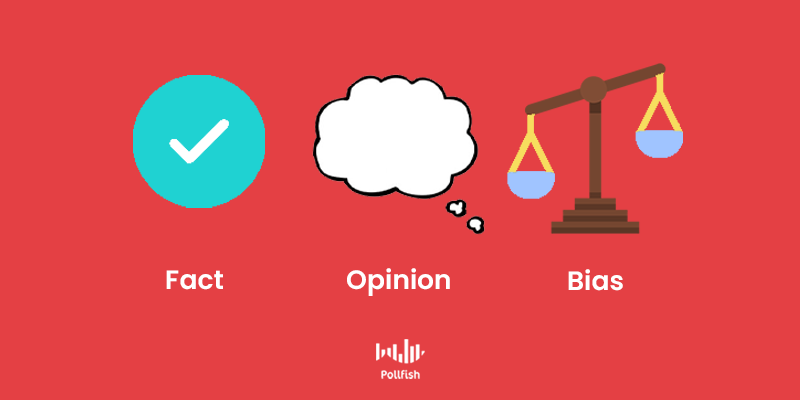
Regardless of how researchers choose to conduct polling, biases exist inadvertently. In order to disprove the myth that polling doesn’t work, you ought to understand the various biases that you are sure to encounter in the polling process.
Avoiding these biases will help refine your polling efforts. Most importantly, using the proper polling software will help you avoid these biases by way of its capabilities. Here are the most common biases to avoid and how an online polling tool can help you circumvent them.
Sampling Bias
Also called the sampling error, as aforementioned, sampling bias arises when only specific portions of a population take part in a poll. Sometimes, leaving out certain segments, or only polling one is intentional, as it may be part of a targeted effort towards one segment of a target market.
But when it’s not, it creates polling results that don’t accurately reflect all the views of the segments that make up a population.
To stamp out sampling bias: use polling software that allows you to zero in on your audience, with multiple subcategories. Make sure the software allows you to add quotas on each subcategory; that way you won’t miss the respondents who belong to this category. If you want to study a wide group of people, opt for a tool that allows you to incorporate multiple audiences.
Non-Response Bias
This bias refers to the inadequate responses or a low response rate from the respondents who you’re targeting. This can include customers who have made purchases from a long time ago or those who simply do not wish to take part in polling research.
To stamp out non-response bias: Make sure the timing of the survey is not too far away from an interaction with your brand, such as a chat, a call with a customer service agent or a digital experience. You can also send it through various ways of distribution such as via a web page, social media or email.
The proper polling survey can remedy this without trouble. This is because this kind of software (the right kind, that is) should be equipped with a response-generating capability. This will ensure that not only is your poll sent out but that it doesn’t stop making the rounds online, until it receives the preset amount of responses.
Often, the software achieves this with quotas and an option for the total number of completes.
Survivorship Bias
This type of bias emerges when your polling is only completed by retained customers, clients and longstanding employees. This kind of bias is present specifically within a business survey. It gravely limits your results to people who generally have a favorable opinion of your business. Their opinions are going to differ in a number of other ways from customers who churned or bounced.
To stamp out non-response bias: software can wipe out this bias with the use of screening questions. These allow researchers to ask for specific questions, as they would in the questionnaire portion of a survey; however, the answers to these questions qualify or prevent a respondent from taking part in a poll.
A potent online polling tool will include several screening questions so that you can diversify your survey respondents.
Acquiescence Bias

This bias occurs when respondents repeatedly and consistently answer with positive responses or connotations. This can arise due to boredom, so rather than entirely reading a question and thinking about it, respondents just answer with “yes” by default. This can also come about out of politeness or fear of retribution in non-anonymized surveys.
To stamp out acquiescence bias: Keep surveys relatively short and ensure your questions and answers are
The best way to minimize the chance of acquiescence bias is to use thought-out questions and answers. You should avoid yes or no questions for this purpose as well.
Polling software is your best bet to clamp down on this bias, as it allows you to create scaled questions. This gives respondents a diverse set of answers, so they won’t feel that the answer they have in mind simply isn't there and then resort to the positive or “yes” answer. A strong polling tool will allow you to create a wide variety of scaled and ratings surveys such as the NPS, CSAT, CET and other such surveys.
Testing Your Marketing, Market Research and Other Business-Related Campaigns
Polls have a bad rep, especially those of the political variety. However, a well-built polling software can overcome any challenge present in market research, which includes gathering responses that are accurate to a specific population.
Aside from making predictions, polling software is also useful for many other market research needs, such as testing the images and messaging of an advertising campaign that’s underway, or seeing if new product releases have been useful for your customer base.
At any rate, it is crucial to pay heed to the features of the software you seek to use. These should empower your research and help you avoid skewed results and other pitfalls.
You should also bear in mind the various biases that exist within polling and keep track of the margin of error of any poll. When you couple these practices with robust polling software, you will be on the right track towards obtaining bias-free information that accurately reflects the thoughts of your subjects.
Frequently asked questions
What is polling software?
Polling software is a type of computerized platform that is used to collect feedback, usually in real-time, from a wide range of people. Polling software is most frequently used to predict the results of elections.
What is a sampling error?
A sampling error is a deviation between the sample group and the actual population. Sampling error occurs when the sample does not represent the entire population or is biased in some way.
What is a margin of error?
A margin of error is a statistical measurement that predicts how many percentage points the results of a sample may differ from the actual value when considering the entire population.
How can sampling bias be avoided?
Sampling bias can be minimized or avoided by using polling software that allows you to target an audience with multiple subcategories or multiple audiences.
What is non-response bias?
Non-response bias is a type of bias that occurs when certain people cannot or will not respond to a survey for a unique reason that separates them from the rest of the population.
How Surveys Help Increase Customer Lifetime Value
How Surveys Help Increase Customer Lifetime Value
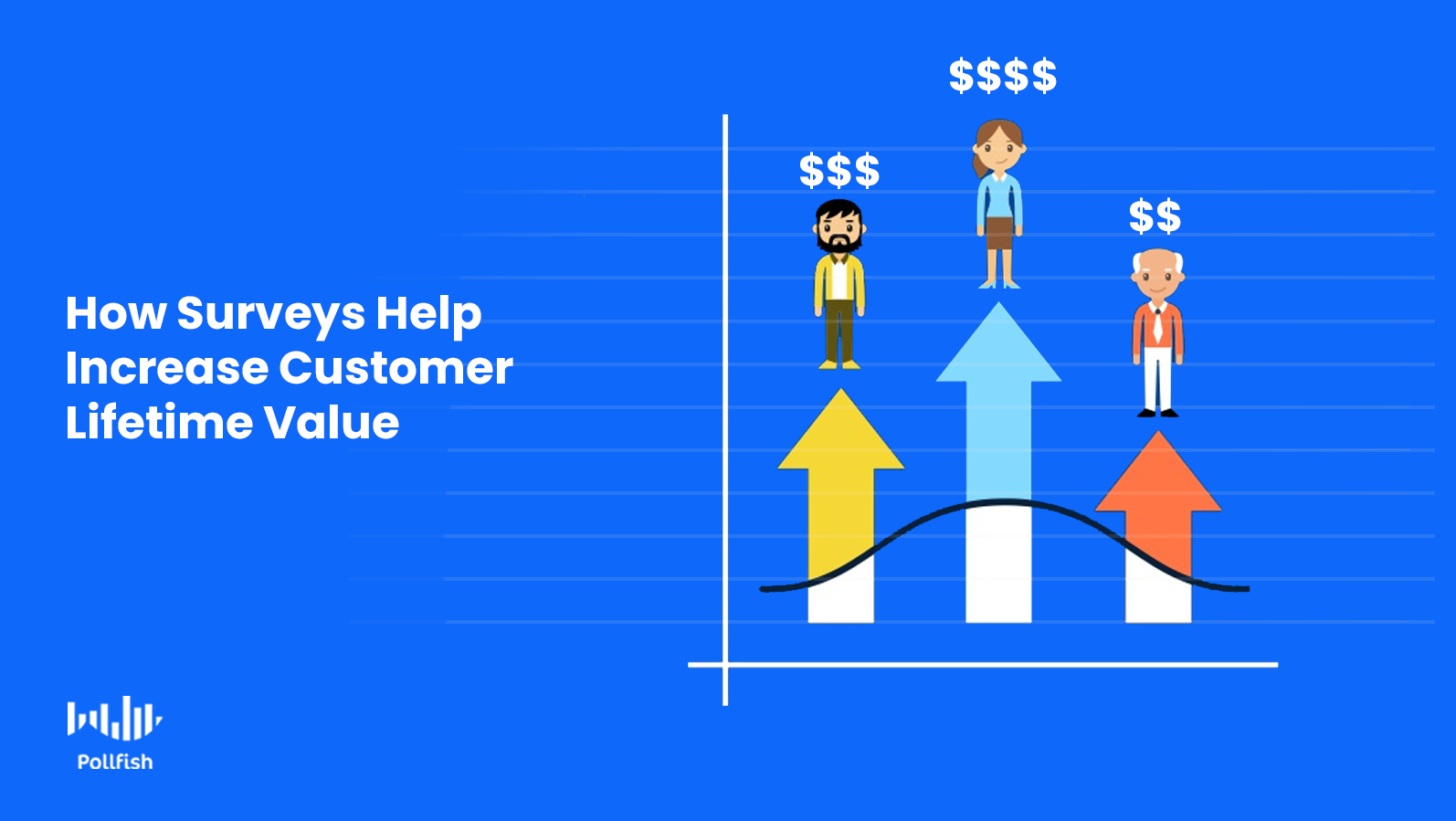
Customer Lifetime Value (CLV) is a sweeping metric that helps brands both keep track of and maintain their consumer loyalty. This concept fortifies customer retention, which is central to keeping any business afloat.
In fact, customer retention — which provides a continuous flow of business — is more sustainable for business growth than customer acquisition, as it costs less to retain customers than to acquire new ones.
As the Harvard Business Review revealed, it costs 7 times more to acquire a new customer than it does to retain a current one. Thus, businesses should prioritize maximizing, or at least maintaining a steady upkeep of their customer retention.
So where does the Customer Lifetime Value fit into this? This article explains what the CLV is, how it helps on the consumer loyalty and customer retention fronts, along with how surveys can help increase it.
Defining Customer Lifetime Value
As its name indicates, CLV is a statistic that measures the value of a customer in relation to a business. This metric does not merely gauge a customer’s value by their purchases; rather it measures their worth during their entire relationship with the company.
As such, customer lifetime value presents the total monetary value a customer will bring to a business during their patronage with the business throughout their lifetime.
Understanding the CLV of your customers, especially when taking their market segments into consideration, helps brands grasp which segments are most useful to their company. CLV therefore allows companies to focus and better market to their most valuable customer segments.
There are more critical reasons as to why brands should monitor their customer lifetime value, as increasing it gives rise to better financial performance.
The Importance of Monitoring and Increasing CLV
It is crucial for businesses to regularly observe the customer lifetime value of their patrons on several accounts. First off, the CLV provides a concrete dollar amount to the worth of customers and it does so in terms of a customer’s long-term relationship with the company.
With this intelligence, brands don’t have to guess how much in total a customer will contribute to their business. As far as customer retention is concerned, the CLV divulges whether certain customers will make repeat purchases.
Businesses can use this metric to determine how much to invest in their customer retention efforts.
While certain customers (those in certain segments of a target market) will show promise with a high CLV, others will require more marketing campaigns in order to incite retention.
It is therefore best for businesses to increase their CLV, as a high CLV indicates loyal customers, i.e., those who will continue to buy from a particular business. Alternatively, a low CLV is a marker of passive customers, those who have made one purchase and will be more difficult to retain.
As such, this metric allows brands to develop strategies around particular customer segments and individual customers in order to foster customer retention.
Furthermore, monitoring CLV enables brands to understand how their UX and CX (customer experience) efforts have been faring. Perhaps a brand introduced a new feature to its website, a new customer support training program or a new advertising campaign to increase customer retention.
The CLV helps brands understand how those efforts contributed to customer value.
How to Calculate Customer Lifetime Value
Customer lifetime value is relatively simple to calculate. However, there are two ways to approach this unit. These are known as the historic CLV and the predictive CLV.
These calculations involve incorporating the different aspects within a customer relationship, which includes customer revenue, acquisition costs and duration. Here are their differences and calculations:
Historic CLV:
This calculation involves looking at the sum of all the profits of a customer’s past purchases. The final amount is a number derived from existing customer data based on a previous time.
Historic CLV is considered the simpler CLV computation, as it exclusively focuses on what a customer has spent on a business in the past. (Hence the name “historic”). Using the simple historic method is most apt in circumstances in which variables remain the same. Ex: Buying a $20 kit from the same brand for 3 years, in which case, the CLV is $60.
The formula:
Customer revenue per year multiplied by
the length of the relationship in years minus
the total costs of acquiring/serving the customer = simple historic CLV
Example: Yearly revenue of Customer #1= $200
Relationship duration = 10 years
Cost of acquisition = $50
Cost to serve = $50 per year ($500 over 10 years)
Calculation:
$200 x 10 = $2,000
$2,000 – $550 = $1,450
CLV for Customer #1 = $1,450
Traditional CLV:
Aside from the simple historic, CLV formula, there is the traditional customer lifetime value formula. This is suitable for customer revenues that don’t remain flat year after year. As such, these require adding in those additional changes in the customer relationship. That is where the traditional customer lifetime value formula becomes handy.
Before you use the formula, you’ll need to understand some of the variables/terms that make it up. Here are the explanations behind each.
GML: The gross margin per customer lifespan, this is the profit a business can expect to earn during the average customer lifespan (the revenue minus the costs).
R: The retention rate, which is the percentage of customers who stay with a business over a fixed period of time (instead of the ones who churn during that time).
D: The discount rate, which is a percentage that accounts for inflation. It is usually at 10%.
The formula:
GML multiplied by
(Retention rate divided by (1+ Rate of discount – Retention rate) = traditional historic CLV
Example: A business’s GML = $1,900
Its customer retention rate = 70%
Its discount rate = 10%
Calculation:
1 + 0.70 – 0.1 = 1.6
0.70 / 1.6 = 0.4375
0.4375 x $1,900
CLV = $831.25
Predictive CLV:
This allows brands to forecast how much profit a customer is going to generate for their business over the course of their relationship with the customer. This is known as the more complete method of computing the CLV.
This calculation combines customers’ behavioral patterns with their transaction history as a means to discover 2 components: the current customer value and the value will alter as time progresses.
The accuracy of this method increases as brands gather more data in regard to customer transactions and behaviors.
Here are the explanations behind several of the variables used in this formula:
Average Gross Margin: The total sales profit a business earns after subtracting only the production costs.
Average Customer Lifespan: The average time a customer makes their first and last purchase with a company. For example, if the time between a customer’s first and last order is 100 days, then the average customer lifespan is 100.
The formula:
((Average monthly transactions * Average order value) Average gross margin) * Average customer lifespan divided by
Number of clients for this period = Predictive Customer lifetime value
Example: A business’s average monthly transactions = 30
Its average order value = $35
Its average gross margin: 25%
Its average customer lifespan= 5
Number of clients during this period:100
Calculation:
((30 X $35) x 25%)x 5) / 1000
CLV= $105,000
How Surveys Help Boost Customer Lifetime Value
Conducting market research will allow you to understand your customers and your industry at a more in-depth level. Secondary research is especially helpful for discovering trends within your niche, along with the marketing tactics your competitors are using.
However, it is primary research that grants businesses with a deep understanding of their customers. Surveys are the most optimal method for understanding the needs of your target market— this includes studying your existing customers, along with those in your customer base that haven’t patronized your business yet.
This is because you can gather data on virtually anything through survey research. Additionally, there are numerous survey types and methods. For example, if you need to measure customer loyalty, you can do so with the Net Promoter Score Survey or with a retrospective survey.
Moreover, an online survey tool can help you conduct market segmentation, so that you’ll understand the different segments of customers that make up your target market. You’ll need to know these when measuring your customer lifetime value.
When you constantly track the needs of your most valuable customers with surveys, you’ll understand how to serve them better, whether it be via product satisfaction, customer satisfaction, user experience (UX) or any other aspect in their customer journeys. By improving their customer experience (CX), you will, consequently, increase the CLV of your customers.
Questions to Use to in Surveys to Increase CLV
In order to improve your customer lifetime value, you’ll need to create surveys with content that is most relevant to your target market, with special regard to existing customers. After all, businesses ought to measure their CLV as a means to increase their customer retention.
The following includes pertinent questions to boost CLV. You may use them in a number of different surveys.
- What do you feel is missing in [niche, industry, product]?
- How can we better improve this product/ experience?
- What would you like to see in this product/ service/ experience?
- What is the most aggravating thing about buying [a product or service]?
- How can we make the purchasing process more efficient for you?
- On a scale of 1-10, how would you rate this company/product/service?
- What product features would you like to see added in the future?
- If the price wasn’t a factor, which of the following companies would you buy from?
- What would you consider a fair price range for a product/service?
- What would prompt you from buying from [company or product] again and again?
Other Considerations for Improving CLV
Online surveys can power a wide range of market research and marketing endeavors. To reap the maximum value out of surveys for your customer lifetime value, you ought to apply other best practices specifically aimed at increasing CLV. These include creating loyalty rewards programs, which incite customers to buy continuously to earn points that they can later apply towards some reward (a freebie or discount).
Additionally, businesses should consider revamping their customer relationship management. This concept is critical in CX, as a bad experience with a support agent will tarnish their opinions towards your business. Consider the CRM system you use, along with the training your representatives receive. If you optimize on these fronts, you’ll improve your CX, and by extension, your CLV.
Remember to pay special attention to customers with the highest CLVs. These tend to make repeatedly larger purchases. Retaining this group ought to be your first priority in terms of customer retention.
These customers are your most profitable; keeping them content with your business will provide the strongest stream of sales. You’ll need to study their motivations, behaviors and desires, which you can easily achieve with the help of online surveys.
Frequently asked questions
What is the Customer Lifetime Value (CLV)?
Rather than measuring a single transaction, the customer lifetime value (CLV) is a metric that defines the value of a customer throughout their entire relationship with a business.
What are the three approaches used to calculate customer lifetime value?
The three ways to calculate CLV are known as historical CLV, predictive CLV, and traditional CLV.
How is historic CLV measured?
Historic CLV is measured by calculating the total amount of money that a customer has spent with a company in the past, and then subtracting the total costs of acquiring and/or serving the customer over that period of time.
What is predictive CLV?
Predictive CLV is a method of forecasting how profitable a customer will be over the course of their relationship with the business. The value is calculated by studying behavior patterns and purchase history in order to arrive at their CLV.
How can surveys improve customer lifetime value?
Surveys can provide a better understanding of your most profitable customers. By continually tracking their needs, you can better serve and retain them, thereby improving customer lifetime value.
How to Conduct Market Segmentation with Survey Research
How to Conduct Market Segmentation with Survey Research
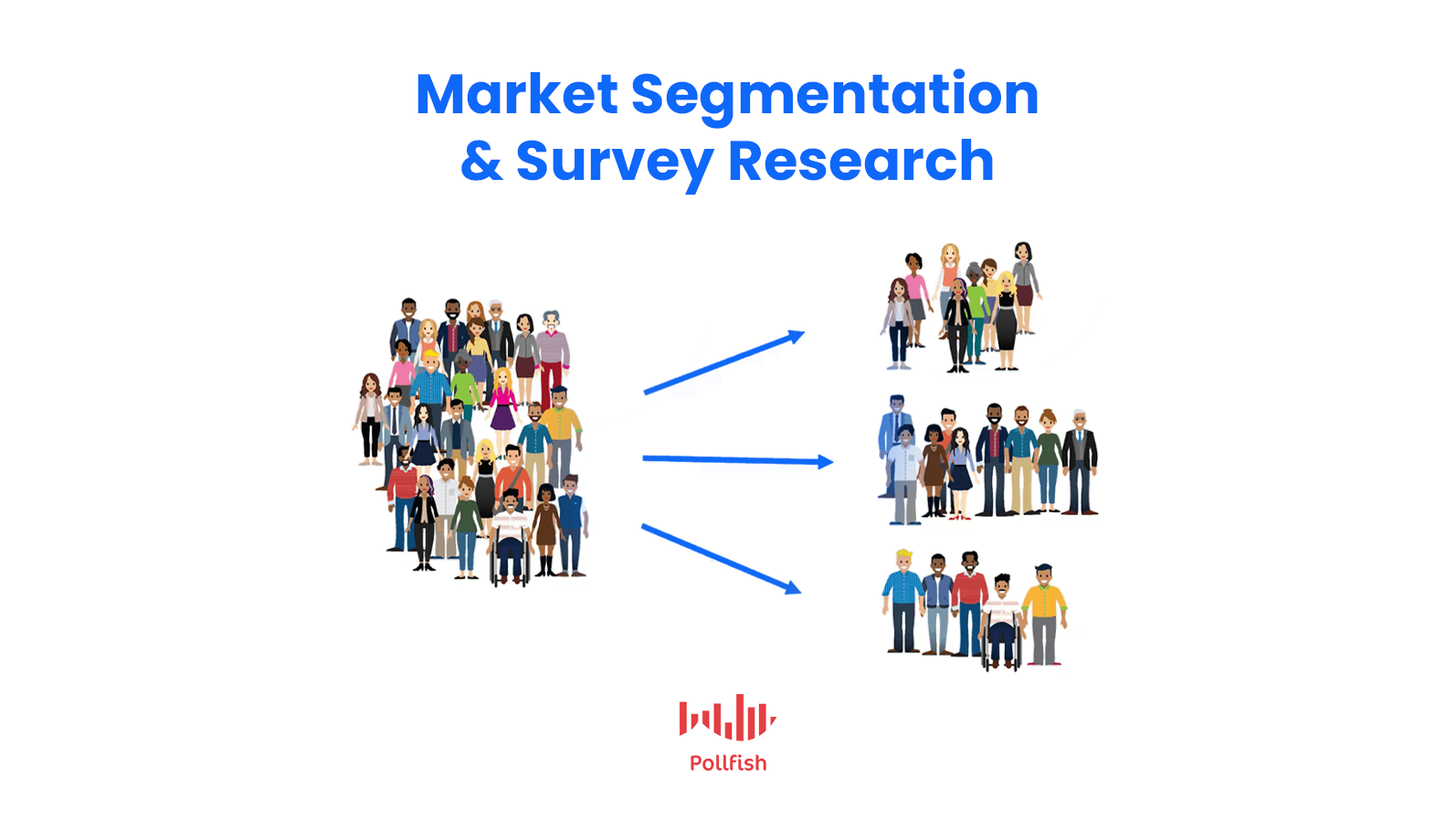
In the world of an ever-increasing need to be customer-centric, conducting market segmentation is an absolute necessity. That is largely because customer experience (CX) has set the stage for business success.
86% of consumers have said they would pay more for a better customer experience and 89% said they would stop doing business with a brand that delivers a poor CX.
However, despite these stark outlooks, only 1% of brands consistently meet these expectations, according to consumers. Clearly, there is much work to be done on the customer experience and customer-centricity fronts.
To create optimal customer experiences, brands must profoundly understand their target market. Although this may seem to be a demanding feat, market segmentation provides the missing pieces to the puzzle.
Although it exists as a separate discipline from survey research, when you pair market segmentation with survey research, your brand is armed with a wealth of knowledge on how to properly cater to your customers' needs.
This article will explore how to do market segmentation in survey research.
What is Market Segmentation?
Market segmentation is a sub-discipline within marketing, in which you divide your brand’s broader target audience into smaller segments or subsets, based on various criteria such as demographics, behaviors, needs, opinions, interests, and other standards to better categorize your target market.
The better you understand your segmented audience, the more effectively you can target your consumers for various business needs, such as product development, sales, brand awareness and most importantly, customer retention.
For example, market segmentation allows you to understand how to improve your advertising based on segments such as low vs middle income, men vs women, those who enjoy online shopping vs those who don’t.
The Benefits of Market Segmentation
This practice offers more benefits than the ones listed above. The contributions of each of these benefits weed out unproductive marketing practices, thereby saving you time and money. Here is a list of the several advantages of market segmentation.
- Gather pain points on specific segments. These pain points are not present within the entirety of your target market, proving the need to segment it. When you segment your consumers, you’ll understand each of their issues on a more intimate level, allowing you to resolve them faster (and know of their existence).
- Convey stronger marketing messages. This practice allows you to avoid coming across as too vague and impersonal. Instead, by understanding your different segments, you’ll be able to create more specific and personalized messages, the kind that speak better to certain groups.
- Avoid making the mistakes of your competitors. Your competitors aren’t going to admit their shortfalls at any time, unless they were able to bounce back ten times stronger. As such, you can use market segmentation to understand how particular marketing, offerings or experiences fell short among particular customer segments.
- Pique the interest of high-quality prospects. Well-targeted messages will lure in the most likely segments to increase sales in your target market. These are the consumers who don’t merely click on your ads, but actually make purchases
- Gain a larger reach by using the right channels. Segmentation helps you uncover the best digital (and other types) of channels through which to market to your segments. Some segments may prefer content, others may attend events, while others are heavy social media consumers. Understanding these preferences and being able to assign them to certain segments is key. You wouldn’t want to spend resources on a seldom-used channel by your segments.
- Identify niche markets. Finding particular segments is known as niche marketing, meaning that your product/service is not necessarily niche, but certain segments of your target market form their own niches. Segmentation enables you to market to these niche audiences, so that you can create new products/services for your underserved segments.
- Accumulate brand loyalty. Brand loyalty is ever important, as it is a pillar of a profitable business; it virtually guarantees that your target market will continue buying from your brand and think of your brand first when they need something from your industry.

How to do Market Segmentation
Before you begin on survey research, which is a crucial stage in market segmentation, you need to carry out the segmentation process at its basic levels. This means understanding all the major steps that make up this practice.
The following steps provide an overview of how to do market segmentation. Note that this article covers segmenting your market by four types in the following section.
- Study your market. Conduct market research via secondary resources and the market research survey. What you should seek:
- What’s the market demand for your product/service? Is it large or too small (niche)?
- How does your brand fit into your overall market?
- Find the proper type of segmentation. Market segmentation is conducted through 5 categories of study: demographic, psychographic, geographic and behavioral (explained in the next section). Choose which your brand needs to study the most; you don’t need to focus on just one. Instead, you can do market segmentation with a few or even all of these criteria.
- Continue doing market research. When you settle on which type of segmentation you are going to conduct, you’ll need to perform it via market research. You can do so by conducting more secondary research and implementing primary research as well. For the latter, focus on questions that relate to the above categories. You should create more personalized ones as you come to grips with your segments.
- Categorize and develop your customer segments. Gather all your research based on which of the 5 types of segmentation you use, and all the secondary and primary research you garnered. Group customer types into their various commonalities, as part of the 5 methods. Group them into segments and personas.
- Create new marketing strategies accordingly. Test them out on your newly found customer segments. This is not only beneficial for general marketing purposes but can lead to finding new personas within your segments.
The 5 Types of Market Segmentation
The previous section presented a general rundown of the market segmentation process. The core of this process, as its name implies, is the segmenting portion, i.e., step two. This is because market segmentation is divided into 5 sorts. These classifications will help you understand you to better market to and serve your segmented customer base.
Demographic Segmentation:
This segmentation type creates groupings of customers based on their demographics. These include categories such as gender, age, education, race, ethnicity, occupation, income level et al. Demographics is the most prominent and widely-used type of segmentation. Many products have been developed simply based on and for particular demographics.
Geographic Segmentation
This type of segmentation focuses on locations such as countries, territories, states, counties, cities, zip codes and others. Although it can exist as a demographic category, it is also regarded as its own type of segmentation. This segmentation is critical for marketing, as customers within different geographical regions have their own sets of needs, preferences and limitations.
This segmentation is also of great use to market research, especially specific types, such as real estate market research or quantitative research, when you need to make generalizations on segments in particular locations.
Behavioral Segmentation:
This divides markets by behaviors and behavioral patterns. The focus is on actions such as consumer purchases, loyalty, lifestyle, usage of products/services in your industry, device preferences and brand interactions. Conducting this segmentation will inform you on how the different subsets in your target market behave in relation to your brand and your industry at large.
These behaviors are crucial to know so that you can create a more tailored marketing approach and better user experiences. That is because this segmentation allows you to glean how your customers make purchases and by how much.
Psychographic segmentation:
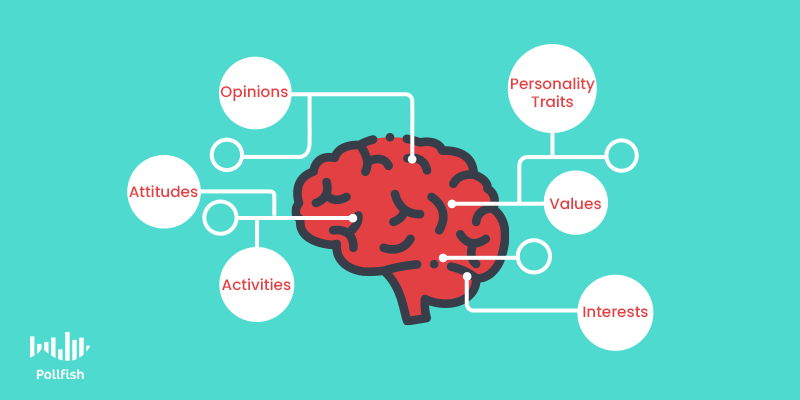
This categorizes people based on the psychologically driven aspects of behaviors. As such, the target market is divided on the basis of certain opinions, values, personalities and inclinations. Psychographic segmentation is the type of classification that not only allows you to assign segments to groups of people, but to pick their brains.
That is because you can create surveys centered on each of these segments to understand the intentions and feelings of a particular consumer group. This segmentation is especially useful in qualitative research, as it helps you pinpoint trends in opinions and uncover the causes behind actions.
Firmographic Segmentation
Comparable to demographic segmentation, this kind factors in demographics, except the kind that zero in on organizations. As such, this segmentation method would study aspects such as company industry, type, size and employee count, among others.
This is useful for a number of market research campaigns. You can use it to aid competitive analysis along with understanding your consumers from the perspective of their employment. Most of all, this segmentation is crucial for B2B businesses as it helps you discover how to market to other companies. You would certainly need to know how to divide this customer base into smaller markets.
Using Survey Research for Market Segmentation
Market segmentation is a clever practice for market research and marketing purposes. This is because it allows you to narrow your focus in advertising, social media and other marketing campaigns, to a smaller group of people who are nonetheless a part of your target market, the consumer group most likely to buy from you.
This methodology should therefore remind you that you should not merely focus on broad campaigns when addressing your target market. You should keep in mind that this market tends to be wide-ranging, thus has its own subsets that differ from one another.
In addition, survey research, as laid out in several above examples, is key to deploy when conducting market segmentation. But it is also crucial to employ after conducting market segmentation, as surveys allow you to dig deeper into the minds of your consumers.
Market segmentation (led primarily by survey research), like other marketing activities, must be acted upon. For example, if you were able to segment your target market into several categories, how will you know how to give them precisely what they need? Survey research will help you find out, not to mention help you avoid unproductive marketing campaigns.
Frequently asked questions
What is market segmentation?
Market segmentation is the process of dividing a brand’s audience into smaller groups (segments) based on more narrowly defined characteristics of the group.
What is the purpose of market segmentation?
Market segmentation is performed to help a company better understand its customers or potential customers by focusing on the varying needs of each specific segment.
What are some of the applications of market segmentation?
Market segmentation can be used to understand the needs of each segment in order to improve products or services, create more effective marketing campaigns, identify new markets, encourage brand loyalty, explore the competition, and expand the reach of marketing channels.
What is demographic segmentation?
Demographic segmentation is used to create market segments based upon the demographics of existing or potential customers.
What is geographic segmentation?
Geographic segmentation is used to create market segments based upon location. The location size may be small (e.g. neighborhood or specific zip code) or large (e.g. state or country).
Fortifying Your Market Research with the Qualitative Survey
Fortifying Your Market Research with the Qualitative Survey
Qualitative research is critical for performing market research. Using what’s known as the qualitative survey is the most potent instrument researchers can apply to garner data for this kind of research.
It’s important to be able to distinguish between qualitative and quantitative surveys when delving into either of these main types of survey research methods. As such, this article will focus on the qualitative survey, its corresponding research method, best practices and other considerations worth being mindful of.
With these key insights, you’ll be able to get your qualitative research up in running in no time.
Defining the Qualitative Survey
This type of survey is characterized by its adherence to qualitative research, that is, it seeks to gain descriptive insights on a topic, rather than measuring it.
A qualitative survey is predicated on digging into the details behind a topic. It also seeks to find causality and motivations. This provides details around happenings, opinions, beliefs and sentiments.
In short, it helps brands understand their target market’s psyche, as opposed to measuring for prevalence and other metrics.
This kind of survey is far less structured than a quantitative survey; it also makes more use of open-ended questions. While it provides a great deal of knowledge, this survey data can be more difficult to analyze.
When to Use a Qualitative Survey in Your Research Endeavors

A qualitative survey can be used in the beginning of your market research, or as a way to complement research you’ve already begun conducting. There are specific points during your market or survey research that you can best tend to with a qualitative survey. Here are several such cases:
- Mapping out a hypothesis: A qualitative survey is an excellent way to both form a hypothesis and test it. As you begin your research process, this survey can help you find the most glaring issues and desires your target market has on their minds. These can help you form hypotheses that you can prove through quantitative research. You can also test your hypotheses with follow-up qualitative surveys.
- When numbers and scales aren’t enough: Usually, a scaled survey isn’t enough — neither is one with visual ratings (hearts, stars, etc.). A qualitative survey can benefit your study to completely flesh out the themes, sentiments and general makeup of an occurrence.
- Finding the “why” behind a phenomenon: You can administer a qualitative survey for this point in the middle of your research process. For instance, if you’ve run several quantitative surveys or even a qualitative survey, you will have gathered insightful data on the big picture of a topic. But there may be a few missing pieces, especially regarding the why behind an occurrence or firmly held belief. That’s where you would do further probing with this type of survey.
- Discovering Latent Details: Although these details may be covert, they can help crack a customer experience (CX) or employment satisfaction puzzle. Whereas quantitative surveys help unlock the number of times something occurs or if it occurs in the grand scheme of things, qualitative surveys can help bring hidden details into light. By asking qualitative questions, you can uncover a gold mine when it comes to pleasing customers, as you’ll understand them in greater depth.
- Putting together the final stages of your market research: Often conducted after gathering quantitative findings, you can use a qualitative survey to wrap up your research. There may be times in which you need more details to understand the results of a previous survey. Or there may be some key aspects that you feel you need to find to complete your research. The qualitative survey is a good closer for these needs.
How to Get Started on Formulating a Qualitative Survey
You may have several ideas on the direction you desire your qualitative research to take. When opting for a qualitative survey, there are certain tips you can stand to learn. The following presents certain key practices to take into consideration when embarking on this survey method.
- Find a strong online survey platform to execute your research. Here are a few things to look for in online survey tools.
- Discover the chief campaign of your qualitative research needs. Are you looking to improve your branding? Do you need insights on a specific industry, such as the technology industry?
- Then, find the main need for this application. Or perhaps, see if there are some missing qualitative data you would need to acquire.
- Create an overall theme for a survey, or for multiple surveys.
- Begin with one survey at a time; first, gather the target audience of the survey. You can appeal to your general target market, or to a segment of it.
- Draft your questions and get observations/commentary from other researchers or colleagues.
- Launch your survey and carefully read over your responses. Cross-reference the answers with quantitative surveys, especially if your quantitative survey is underpinned by quantitative research you’ve already begun.
- Iterate with another survey if need be.
- Analyze your responses to find motivations and find deeper insights into themes and opinions.
- Layout a plan of action for your broader campaign based on your analyses.
- Take small steps; don’t rush (unless you’re facing a crisis). Start implementing some of the changes or accommodations for your target market. Or, finish your research with a presentation of your discoveries.
Questions and Surveys to Use in a Qualitative Survey
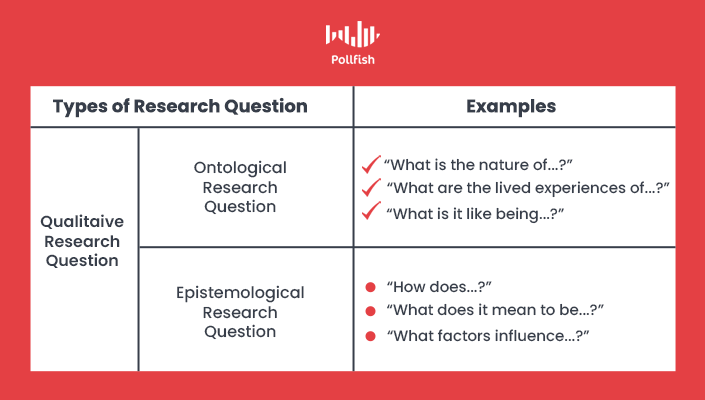
A qualitative survey can exist in a variety of formats. We’ve covered a wide variety of survey research methods and survey types themselves. Since qualitative studies can be applied across a number of survey types, you ought to know how to orient your questions around several of them.
Here are a few question examples of qualitative surveys. You can also add qualitative elements to surveys that are not specifically geared for qualitative research.
Net Promoter Score (NPS) Survey Questions:
Along with the Ultimate Question, aka the main NPS survey question, use the following to extract qualitative data. (This question typically asks respondents on a scale of 1-10, how likely they are to recommend a company to others.)
- Why is it that you’ve ranked us with this score? [open-ended]
- What do you like the most about our company? [open-ended]
- What services or products do you enjoy the most from our brand? [open-ended or multiple choice]
- What are some of the things that we can do to improve how you view our brand?
Customer Loyalty Survey Questions:
Consumer loyalty is a widely-encompassing quality that can be evaluated in a number of market research studies. This includes using the Repeat Purchase Rate and Customer Lifetime Value metrics. Additionally, the notion of customer loyalty has several of its own surveys.
- Do you consider [brand] to be high-quality? Why or why not? [multiple choice and open-ended]
- Would you return to make more purchases from us? Why or why not? [multiple choice and open-ended]
- Why have you bought [x number of times, carry forwarded from previous numerical question] from us? [open-ended]
- Why are you [either considering yourself a loyal customer or not, piped from previous yes or no question]? [open-ended]
Product Satisfaction Survey Questions:
- Which features do you find most useful from this product? [multiple choice]
- How would you rate the product’s ease of use and why? [open-ended and multiple choice]
- Have you experienced any issues with the product, if so what are they? [open-ended and multiple choice]
- How has your general experience been with our product? [open-ended]
Retrospective Survey Questions:
Although these surveys are typically used in the fields of medicine and psychology, they too can be applied to the business market research sphere. Used in retrospective studies, these surveys scrutinize events that have taken place in the past (including the distant past).
- Which aspects in your [in-store, over the phone or online] experience have contributed to the way you shop today? [open-ended and multiple choice]
- How long have you been taking part in/buying [habit, product or brand]? [multiple-choice]
- Have you used [product] in the past and how has it shaped what you currently use for your [niche] needs? [open-ended and multiple choice]
- Why have you bought/chosen from [brand/product] for [x number] of years/months? [open-ended]
Event Evaluation Survey Question Examples:
- What did you like the most about the event? [open-ended]
- What experience stuck out the most to you and why? [open-ended or multiple choice]
- What could we do to improve your experience? [open-ended]
- Is there anything else you would like to tell us about the event? [open-ended]
Expanding Your Research Needs
Although the qualitative survey can help you unearth the “why” and “how” in your research on your target market, you’ll find that much like with quantitative surveys, it too can help you uncover more on the “what.”
The difference is that this type of survey allows you to get more granular and in-depth on a subject matter, whereas quantitative surveys paint a clear picture of its measurements, metrics and other quantifiable data.
Bear in mind that in the aforementioned qualitative question/survey types examples, each survey type is not intrinsically — or solely to be used for qualitative research. In fact, it often includes a mash-up of both qualitative and quantitative aspects.
This is natural in survey research, as both of these surveys and research types work in tandem. As such, make sure to add qualitative questions every now and then to your quantitative surveys. However, if you are looking purely for qualitative research, you can also attempt to conduct an entirely qualitative survey. The online survey tool you choose to apply is your best armor.
Frequently asked questions
What is a qualitative survey?
A qualitative survey is a type of survey that is focused on gathering descriptive insights and exploring motivations or causes for certain phenomena.
How are qualitative surveys different from quantitative surveys?
Quantitative surveys are focused on collecting data that can be assigned a numerical value in order to easily measure or quantify it. Quantitative surveys tend to answer the “what or who,” while qualitative surveys focus on the “why” or “how.”
What types of surveys can include qualitative questions?
Almost any type of survey can include qualitative questions, even if the bulk of the survey contains quantitative questions. Some of the most common survey types to include qualitative questions are the Net Promoter Score (NPS) survey, customer loyalty survey, product satisfaction survey, and retrospective survey.
How can qualitative survey questions help expand your research?
If you have begun collecting data on a certain topic, but have yet to unlock the “why” or “how” behind that data, qualitative survey questions can provide the missing piece. By allowing you to dig deeper into the psyche of your respondents, you can uncover additional information or unexpected responses.
When should qualitative surveys be used?
Qualitative surveys can be used to complete existing research data in order to gain deeper insights. A qualitative survey can help you form a hypothesis, better understand your target audience, and/or figure out why something is happening.
Diving Into Longitudinal Surveys
Diving Into Longitudinal Surveys

Longitudinal surveys are the most powerful assets that marketers and market researchers can use when conducting longitudinal research.
We’ve previously highlighted the three main types of survey research methods, which include cross-sectional studies, longitudinal studies and retrospective studies. In this article, we will cover longitudinal surveys and their underlying studies.
You can apply longitudinal studies for a wide range of verticals and purposes. As such, it is crucial to learn about this research method so that you can set it off smoothly for your survey research needs.
Defining Longitudinal Surveys
A longitudinal study is defined as a study in which researchers gather data on the same set of variables (respondents) over a period of time. This kind of research grants researchers the ability to closely examine the trajectories and changes of their subjects over time.
This study includes gathering insights on the sample pool’s opinions, behaviors, sentiments, desires, reactions and several other aspects. Mostly used in medical and social sciences, this form of research is also invaluable for brands, as studying your target market is key to keeping your business alive.
A form of correlational research, researchers (and businesses) conduct longitudinal research via collecting data on a group of variables without influencing or affecting the variables in any way. Each data collection is called a wave.
It is optimal to conduct this kind of study via longitudinal surveys, as they are designed to garner all the questions you need and to create them in innovative ways.
The Key Aspects of Longitudinal Surveys
To fully understand longitudinal surveys, you should peruse some of their key features. This will help you understand their make up and decide whether to use them for your survey research.
The following lists the core facets that distinguish these surveys from that of others. Here is how they differ aside from their deployment frequency:
- These studies and their surveys gather insights over long-term periods.
- Despite being typically used for a long period of time, there is no fixed amount of time required to constitute a longitudinal study.
- These studies can range from several weeks to years and even decades.
- They are part of observational studies, in which no intervention takes place, only pure investigation.
- They involve repeated observations of the same group of participants.
- They are used to uncover relationships between variables that are not connected to background variables.
- They are used to discover how the sampling pool (respondents) changes over time.
- They are used after extracting some findings from cross-sectional studies, when those studies warrant more data and inquiry.
- They collect both quantitative and qualitative data.
- They can be conducted through primary research, along with secondary research.
- Primary sources: surveys, survey panels, interviews, focus groups
- Secondary sources: government websites, focused reports, ex: longitudinal studies on American youth
How They Differ from Cross-Sectional & Retrospective Surveys
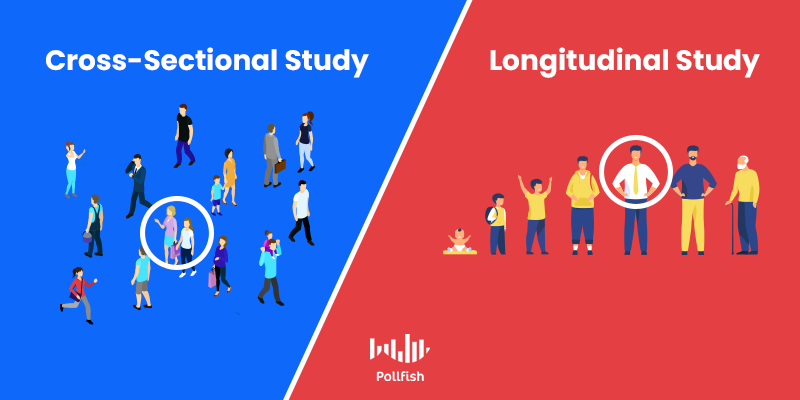
Longitudinal studies are often contrasted with cross-sectional studies. They also differ from retrospective studies. The survey of each study follows suit, as it will be distinguished in design, function and deployment frequency.
Unlike longitudinal studies, cross-sectional studies involve examining samples of a given population (the cross-section) at a particular point in time. The surveys in this research method paint a snapshot of a sampling pool, usually the prevailing one.
As such, cross-sectional studies are far shorter to conduct. They are often used as precursors to longitudinal studies, in that they discover correlations that can be further probed longitudinally.
Retrospective studies combine aspects of both cross-sectional and longitudinal studies. They study respondents with surveys about past events. Researchers can thus compare past feelings and attitudes with those of the present, much like in longitudinal studies. In this way, these studies are used hand in hand with longitudinal studies, despite that retrospective studies form their own distinct set of research.
Retrospective surveys can be conducted just once, as are cross-sectional surveys. They may also amass data on several points in time. These surveys draw from a pool of an already existing data set.
As such, retrospective studies only deal with events of the past and will not gather any new data; that’s where longitudinal studies are needed to be used in tandem with them.
It’s important to note that all three of these research methods/survey types are observational, allowing researchers to record and understand the subjects’ behaviors via observation only.
The 3 Types of Longitudinal Surveys
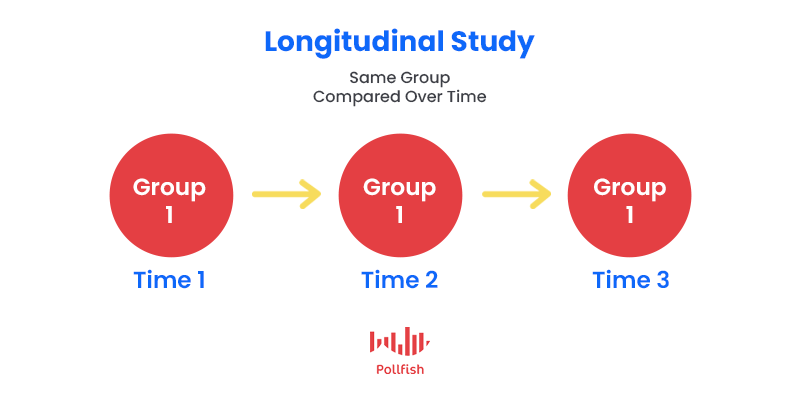
Longitudinal studies can be carried out in various ways. There are three main classifications of longitudinal surveys: a panel study, a cohort study and a retrospective study. As mentioned above, retrospective studies make up their own major form of research. However, due to their close involvement with longitudinal studies, they can also exist as a form of these studies.
Panel study:
- It involves sampling a prerecruited set of survey respondents.
- These respondents agree to a particular length of participation.
- Surveys are sent to the exact same group of respondents.
Cohort study:
- It is conducted through online survey software.
- Respondent selection is set by way of shared characteristics, such as a geographical location, births and historical experiences.
- It also deals with respondents on the basis of demographics and opinions and behaviors (the latter two are collected via screening questions).
Retrospective study:
- It uses past information on the same or similar subjects (variables).
- It involves studying the past with recorded data. Ex: medical records, past surveys.
- It complements any current or soon-to-be gathered longitudinal data.
The first two types of surveys are part of prospective longitudinal research, in which a sampling pool is studied over a period of time. They therefore fall opposite to retrospective studies.
Which Industries Depend on these Surveys for Market Research
There are several industries that utilize longitudinal surveys for market research undertakings. These surveys, therefore, provide a wide variety of applications. The following list details the various verticals that rely on longitudinal surveys.
- Healthcare: Physicians, other healthcare providers and researchers can study any biological change in participants in terms of their lifestyle, i.e., their diets, their fitness/ sedentary habits, health upkeep, reactions to medicines and much more.
- Retail: Retailers can study shopping habits from time to time and discover how advancements in the sectors affect those habits or form new ones.
- Psychology: Psychologists can conduct these surveys to study how the mentality and psyche of various groups change over time in reaction to stimuli or any change.
- Education: Those in the education sector can use students' test scores, work and products to track developments over time. Monitoring student progress can also identify disparities in academic performance levels among students.
- Real estate: Real estate agents and business owners can use these surveys to gather opinions of residents and businesses within a neighborhood or property over time.
- Technology: Tech leaders and manufacturers can learn how consumers change or develop certain behaviors due to the use of existing technology or the emergence of new kinds.
- General business: Brands can conduct these surveys to closely monitor their target market, especially in relation to their products. Additionally, businesses can study closely associated target markets or even different knees to gain new patrons.
Types of Business Surveys that Rely on Longitudinal Studies
Dovetailing onto the final industry using longitudinal data, that of general business, it is crucial to understand just the kinds of surveys that brands can use. This is because a wide array of survey types (based on the subdisciplines of business) can be applied in longitudinal studies. Here are a few key survey types:
- Marketing market research: Brands can use marketing surveys for market research to study trends in the market and within niches firsthand. They can also help businesses capture demand for their product/service, along with measuring campaign success.
- Customer Satisfaction: A major component of any business, there are a variety of surveys for this purpose, such as the Net Promoter Score (NPS), Customer Satisfaction Score (CSAT) and the Customer Effort Score (CES).
- Product feedback: These surveys provide necessary insight into the sentiment around product launches or existing products, should you want to test their levels of customer contentment. You can test for usability, awareness and general opinions on your products via longitudinal feedback.
- Employee engagement: Not all survey research is external, not even when it comes to the longitudinal variety. As such, it is apt for businesses to keep an eye on their employee engagement levels. This involves checking on employees’ comfort on the job and collaboration with others. A longitudinal survey on employee engagement will give you the full scope of your company’s pulse and how to improve it.
The Pros and Cons of Longitudinal Surveys
Longitudinal studies, like others, come with their own sets of benefits and stumbling blocks. You ought to consider both sides in order to get the full picture on this kind of research method. Understanding the pros and cons will help you determine whether it is worth using this kind of study and its accompanying survey(s). It will also keep you aware of what to expect.
Pros
- Longitudinal surveys allow you to monitor your target market and general sampling pool in real time. This allows you to place all insights sequentially and be able to correlate events with causes.
- This is the only study that gives you access into observing developments and life-spanning issues.
- These surveys allow you to study hypotheses conjectured at cross-sectional surveys to learn more and form educated decisions.
- This is the most optimal study for identifying causal relationships and cause and effect.
- It stamps out the risk of recall bias, which denotes the inability to remember past occurrences.
- It can be used within a variety of survey types and industries including ones not mentioned above such as advertising, community feedback and more.
- They allow you to discover which sentiments and behaviors are conditional and which withstand the test of time.
Cons
- These are the most time-consuming surveys; they may not work alongside other surveys since they’re results aren’t complete until the end of the studied period.
- They require the most resources and are the most expensive kind of survey to conduct.
- Respondents may drop off over time, as not all are going to be as committed to the study. This is known as selective attrition.
Beyond Market Research: Longitudinal Studies as Content Assets
Longitudinal studies take the most amount of dedication and commitment — both on the end of the researchers and respondents due to their time-consuming nature. Nonetheless, they are valuable sources of primary research.
For businesses, these kinds of surveys do far more than just provide firsthand insights and data. Marketing teams can delight in that conducting longitudinal studies provides an invaluable content marketing asset, the kind that will easily distinguish a brand from its competitors.
Many businesses rely on content to increase brand awareness and gain leads. In fact, 60% of marketers produce one piece of content per day to grow their business. There are brands that use it to boost their user experience (UX) and even retain their customers. While blogs and social posts are typical, a longitudinal study is a downloadable asset worth conducting. It may be enlightening enough to gain media attention.
Frequently asked questions
What are the three main types of survey research methods?
The three main types of survey research methods are longitudinal studies, cross-sectional studies, and retrospective studies.
Why are longitudinal surveys performed?
A longitudinal survey is one that is created in order to gather data from respondents over a period of time. Surveys are distributed multiple times to the same group of respondents in order to study how specific variables change over time.
Why are longitudinal surveys performed?
The purpose of a longitudinal survey is to understand how a group’s behaviors, opinions, feelings, needs, and desires change over a period of time.
How does a longitudinal study differ from a cross-sectional study?
Cross-sectional studies provide a snapshot of the sample pool at a specific point in time, while longitudinal studies provide many snapshots of the sample pool at specific points over a period of time.
What are the three types of longitudinal studies?
The three types of longitudinal studies are panel studies, cohort studies, and retrospective studies.
Excelling in Survey Research with the Quantitative Survey
Excelling in Survey Research with the Quantitative Survey
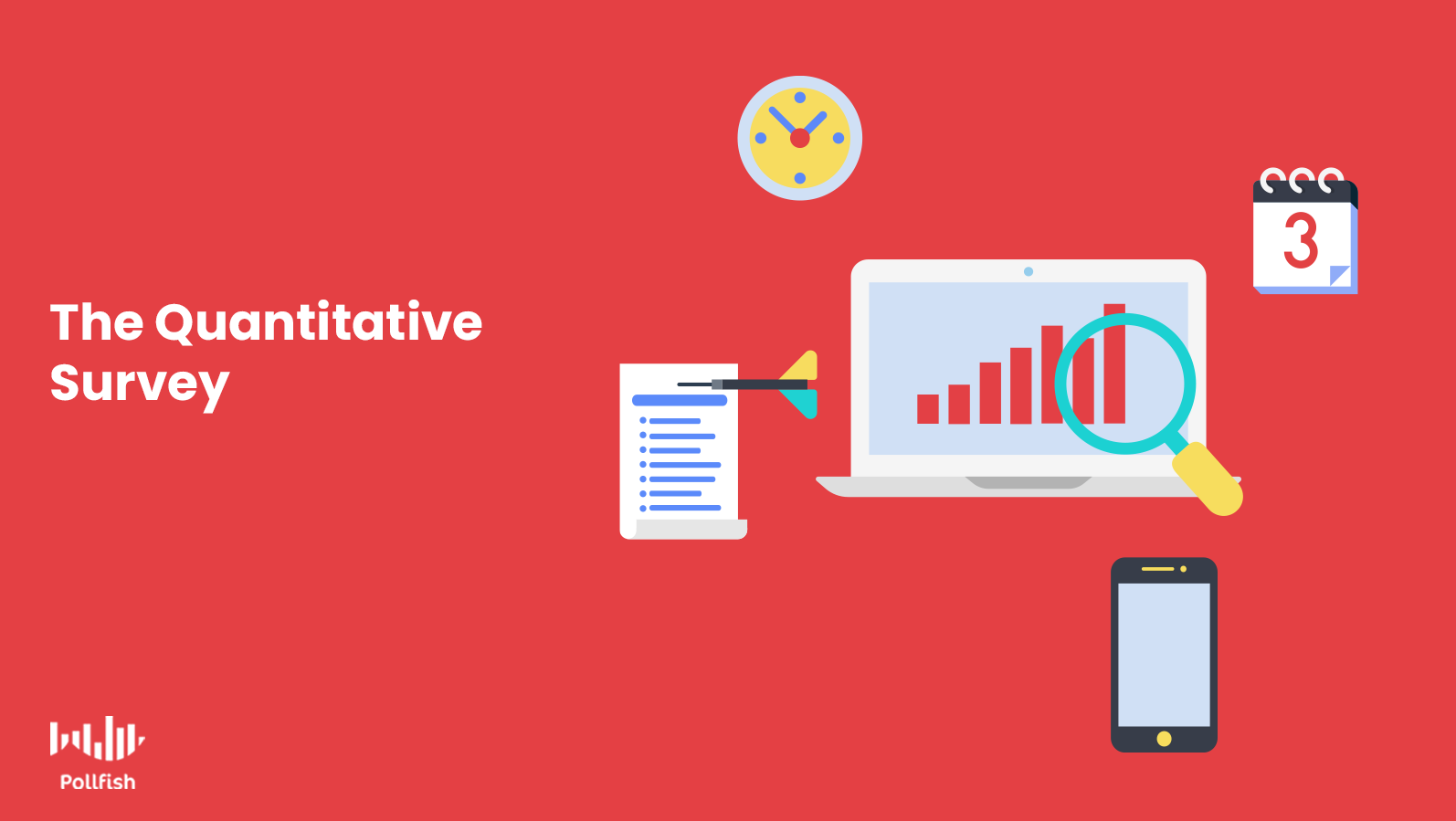
A quantitative survey provides researchers with data that is quantifiable in nature, making this type of survey an important component of any research project. In a quantitative survey, numeric values are assigned to the answers so researchers can objectively measure and compare survey data.
A quantitative survey produces the type of data that many of us associate with surveys. This type of data is easily converted into objective, numerical results that can be viewed in tables and charts to provide a clearer picture.
In “The Complete Guide to Quantitative Market Research,” we covered the types of quantitative research methods that are used to drive market research. In this article, we will focus specifically on how you can use a quantitative survey to gather numerical data to drive your research project.
Defining the Quantitative Survey

In a quantitative survey, data is obtained by asking respondents objective, close-ended questions. Each question has a predefined list of answers. The responses are then used to compile numerical data that you can analyze via tables, charts, and graphs.
Quantitative survey questions are used to gain insights about ratings, pricing, frequency, and likelihood. They are often used to understand the relationship between attitudes and consumer behavior. The responses for quantitative survey questions include binary, multiple-choice, and scaled responses.
One of the main ways that a quantitative survey differs from a qualitative survey in that it asks “who” and “what,” while qualitative questions ask “why,” in order to understand the motivation behind actions, thoughts, or feelings. Qualitative questions are commonly used to gain context or gather information about attitudes, lifestyle choices, and issues. The responses for qualitative questions involve both open-ended and multiple-choice questions.
The Pros and Cons of Quantitative Surveys
In order to understand when to use quantitative surveys, you must first understand the pros and cons of this type of survey.
The Pros:
- The data from quantitative surveys is usually easy to collect and analyze.
- The simple format of quantitative surveys allows researchers to distribute them more broadly and reach a larger audience.
- Without open-ended questions, quantitative surveys are usually faster to complete, which can improve the response rate.
- Quantitative surveys are useful when researching sensitive subjects because they can allow the respondent to remain completely anonymous, without the need to contribute any personal or identifiable information.
- Quantitative surveys are more mobile-friendly than qualitative survey questions because the respondent does not need to type out lengthy answers.
The Cons:
- Quantitative surveys do not allow researchers to probe for deeper or unique answers to survey questions.
- The results of quantitative surveys can be misleading. Despite the seemingly objective nature of quantitative surveys, researchers can interpret the data based on their own views and then state conclusions in a way that sounds factual since they are based on numbers.
- Since quantitative survey questions have predefined responses, there is no opportunity for a respondent to volunteer unexpected information.
- It can take longer to plan a good quantitative survey that will collect the data needed to understand relationships or behavior.
- Survey responses must be carefully considered so that respondents are able to select an answer they can relate to.
Creating a Survey with Quantitative Questions

Quantitative survey questions will yield data that you can use to better understand your target market. The results can be compiled into a research report to provide statistical information and detailed insights. This information is typically used to understand prevalence and quantify phenomena, along with then being used to broaden research efforts and better understand the market as a whole.
In order to formulate the right type of questions, you first need to understand the goals of your research project. In quantitative research, researchers often start by stating the objective as a question and then designing survey questions to find the answer.
For example, a researcher might ask: “How do the study habits of college freshmen compare to the study habits of college seniors?” In order to answer this, the researcher would need to gather information about both college freshmen and college seniors in order to draw conclusions.
Remember: you need to create quantitative survey questions in a way that allows them to be translated into numerical data. This means that you will need specific, numerical answers to each question.
Quantitative questions frequently ask “how” or “what.” For example:
- What is/are…?
- How many…?
- How often...?
- What percentage…?
Below we provide some example questions that a researcher might ask in order to understand how study habits change throughout the course of a college education. For the purpose of this exercise, assume that the researcher has used pre-screening questions to sort the respondents into two groups - college freshman and college seniors who are attending a 4-year university for the first time.
Establish Demographics
In order to understand how demographic factors influence responses, you will need to gather some basic demographic information:
- What is your age? [Dropdown]
- What is your gender? [Multiple choice]
- How many years have you attended this college? [Dropdown]
- How many people in your immediate family (parents and siblings) have attended college? [Multiple choice]
- What is the highest level of education attained by either of your parents? [Multiple choice]
Understand Study Habits
The next part of your survey will focus on gathering data that you can use to describe the study habits of these two groups.
- How many hours per day do you study? [Multiple choice answer]
- How often do you attend a study group? [Multiple choice answer]
- How likely are you to join a study group for a class that you struggle with? [Multiple choice]
- How many study groups are you currently a member of? [Multiple choice]
- Which of the following study tools do you use and how often? [Matrix]
- How do you rate the following study tools? [Matrix]
Deeper Questions
Despite their objective nature, quantitative survey questions can help you understand how your respondents feel about their experiences, that is, it helps you quantify their feelings Here are some ways you can use quantitative questions to gain deeper insights:
- Please select how much you agree or disagree with the following statement: My current study habits are effective. [Likert scale]
- Please select how much you agree or disagree with the following statement: I know which study tools and methods are appropriate for each of the courses I’m taking [Likert scale]
- Please select how much you agree or disagree with the following statement: I think that I study more than other students in my year. [Likert scale]
Once you have your survey responses, you can begin to analyze the data. After this, you should have a general idea of the landscape of freshman and senior habits. This data can help you create a research report or lead to further surveys to further explore or better understand your findings.
Power Your Quantitative Survey with the Right Questions
Quantitative survey questions can power your research project by helping you gather and analyze large amounts of data with relative ease. This data can help you establish a good understanding of your subject matter and establish objectives for future research efforts. For this reason, most researchers include a large percentage of quantitative survey questions in their surveys.
Many surveys contain a mix of quantitative and qualitative questions, with quantitative questions forming the bulk of the survey. This is helpful because quantitative questions allow researchers to easily analyze and define findings, while qualitative questions can reveal deeper insights, contextual information, and unexpected findings.
Gain further insights by pairing some of your quantitative survey questions with a few, carefully chosen qualitative questions. By pairing questions in this way, you get the best of both worlds — numerical data that is ready for analysis and the potential for new discoveries by way of personalized responses.
Frequently asked questions
What is a quantitative survey?
A quantitative survey is one that asks close-ended questions that can be assigned a numerical value in order to allow for analysis via tables and graphs.
How does a quantitative survey differ from a qualitative survey?
Quantitative surveys seek to answer questions about “who” and “what,” why qualitative surveys are concerned with understanding “why.” Quantitative surveys do not have open-ended responses, while qualitative surveys can have a mix of multiple-choice and open-ended.
What are some of the benefits of quantitative surveys?
Quantitative surveys are easier to distribute to a large audience, allow for easier data collection and analysis, and tend to have a higher response rate since they are faster to complete.
What are some of the drawbacks of quantitative surveys?
Some of the limitations of quantitative surveys include the potential to misinterpret results and that they provide little opportunity to receive unexpected answers. It can also be challenging to design a good quantitative survey since the answers are defined rather than open-ended.
What is the benefit of including a mix of quantitative and qualitative questions?
Many surveys contain a mix of quantitative and qualitative questions because it provides researchers with plenty of numerical data to analyze, while also providing the potential to dig deeper and get some unexpected responses.
Diving Into the Customer Loyalty Survey for Business Growth
Diving Into the Customer Loyalty Survey for Business Growth
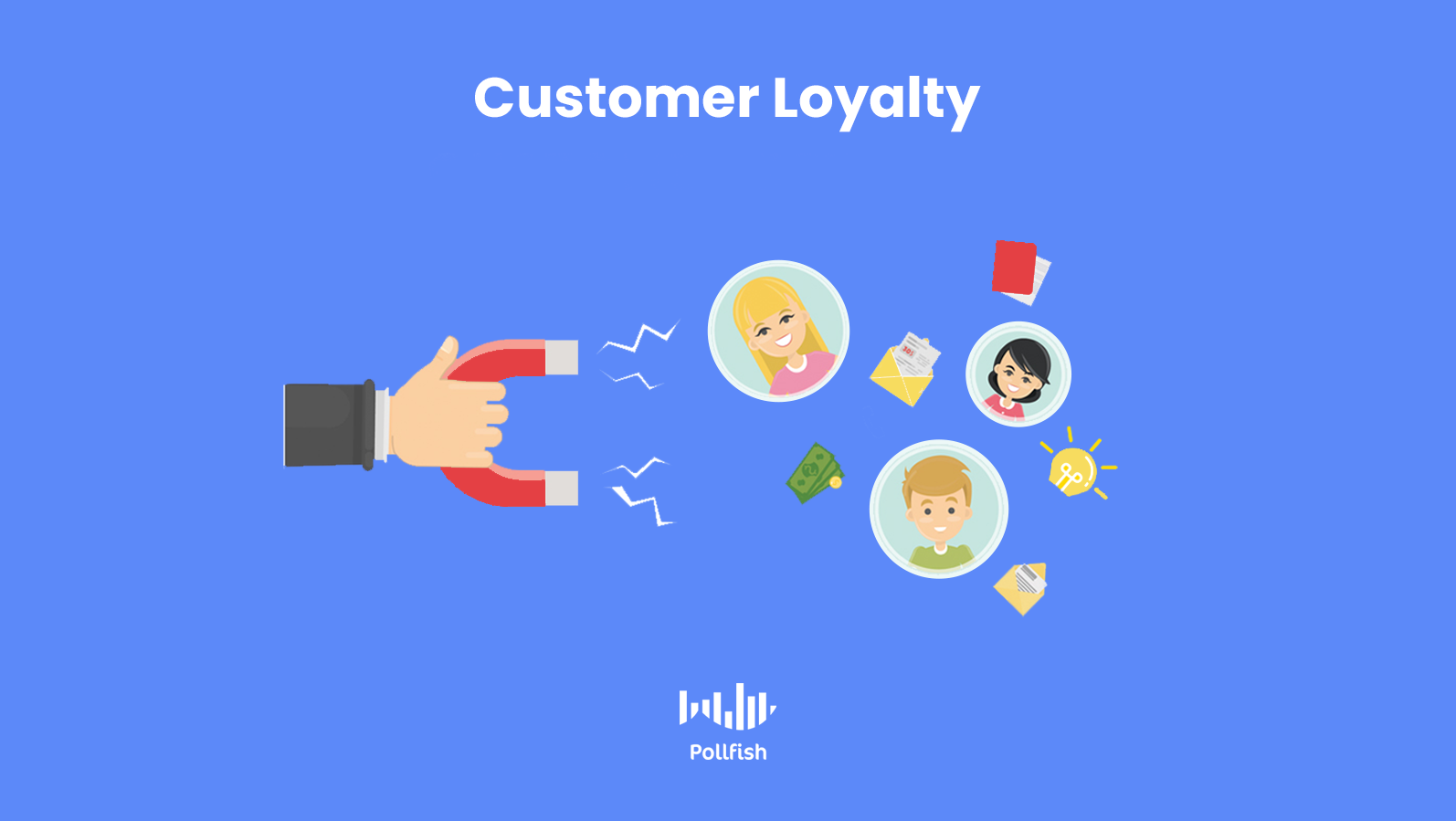
There is nothing quite as sought after in the business world as customer loyalty. A customer loyalty survey can help businesses achieve this lofty end.
There is more to customer loyalty than just returning customers, as this concept goes beyond customer retention. Thus, customer loyalty also has its own methods of measurement and attainment.
This article presents a deep dive into the customer loyalty survey, not simply shedding light on its particulars, but how it can help you grow your business by creating customer loyalty within your target market.
Defining Customer Loyalty
Before jumping into the customer loyalty survey, let us cover its underlying theme of customer loyalty. This term is used to describe an ongoing business relationship in which customers consistently choose a company’s product/ service over that of its competitors.
This concept is the driving force behind repeat purchases from customers, even in a competitive market, i.e., one in which competitors offer similar price points, promotions and experiences.
Customer loyalty is not merely customer retention; rather it is the most powerful form of it, as it signifies the segment in your target market that exhibits loyalty to your brand. That means that this group of customers provides more than just a few occasional buys from your business.
Rather, these consumers have a more personal connection to your brand, a tie that keeps them returning to your business on a regular basis. This is established by way of building a promising reputation or having impacted your customers in a considerable fashion.
This is to say that loyalty takes several factors to build — it cannot be achieved by one good customer experience. That is because the nature of loyalty is ongoing, so while you may have provided one positive experience, it is not guaranteed to retain your customers, let alone build a sense of trust, which breeds loyalty.
Why are Consumers Loyal to a Brand?

From the above section, we can deduce that loyalty comes from a brand’s environment. This environment has to provide multiple points of customer satisfaction.
This multi-faceted approach can help build customer loyalty over time. Here are a few concrete reasons as to why consumers are loyal to a brand:
- They associate it with positive experiences, such as online experiences, interactions on digital, phone or brick and mortar channels with brand representatives.
- They feel that they are getting something of quality from your brand in particular.
- The price ranges, discounts and promotions fit within their budgets and lifestyles.
- Customers feel connected to a brand due to its values and associations.
- Customers are intrigued by the content a brand provides as an auxiliary, whether it is on social media, websites or video content.
Why Your Business Needs Customer Loyalty
Your business needs to establish at least some degree of customer loyalty within your existing customers. Loyal customers can help your brand stay afloat even in times of crisis.
In fact, a negative experience can be a covert blessing — if you correct an issue a customer has, it reinforces the positive nature of your brand and customer experience (CX). Thus, it will strengthen your brand’s relationship with customers, paving the way to loyalty.
Here are the key reasons as to why your business needs customer loyalty:
- It represents a steady pool of income as opposed to one-off purchases.
- It prevents existing customers from leaving your brand, either by way of website bounces, not completing a site purchase, doing window shopping or turning to competitors.
- Customer acquisition is more expensive than customer retention.
- A 5% increase in retention may lead to a profit increase of up to 95%.
- It is easier to cross-sell and up-sell to existing customers than new ones. (A brand is 60-70% likely to sell to existing customers and only 20% to new customers).
- Loyal customers are more likely to recommend your brand, taking on a crucial marketing effort themselves.
- Loyal customers tend to spend more on a brand than first-time customers.
There are several other benefits that conjure up the need to attain customer loyalty. The above lists only a handful of chief reasons.
How to Measure Customer Loyalty
The most effective way to measure customer loyalty is via the customer loyalty survey, a type of survey specifically designed to gauge the degree of loyalty (or lack thereof) customers harbor for your business.
The true value of a customer loyalty survey is that it can take up a variety of formats, all while allowing you to ask all the questions you need.

The following list enumerates how to measure customer loyalty. Although some of the following items exist as measurements, they can also be used as surveys themselves.
- Customer Lifetime Value (CVL): The measurement of how much value a customer will add to your company during their lifetime. The longer a customer makes purchases from a business, the greater their CVL becomes.
- To calculate: Multiply customer value by the average customer lifespan to get the approximate value you can expect from an average customer during the course of their business relationship with you.
- Repeat Purchase Rate: The percentage of your entire customer base that partakes in repeat business with a company. Also called the repeat customer rate, reorder rate, or customer retention rate, it falls between 0% to 100%.
- To calculate: Divide the purchases from repeat customers by all the buys on a site during a given date range.
- Net Promoter Score (NPS): This is a type of customer loyalty survey, also useful for measuring customer satisfaction. This score-based survey shows how likely customers are to recommend your brand or offerings. It asks respondents to rate their likelihood of recommending you on a scale of 1-10. (1-6 range = detractors, 7-8 range = passives & 9-10 range = promoters).
- To calculate: Subtract the total number of detractors from the total number of promoters to determine how many people are likely to recommend you. ‘
- Customer Loyalty Index (CLI): A standardized customer loyalty survey used to monitor customer loyalty over time. It relies on multiple factors like the NPS, upsells, and repeat purchases.
- It achieves this via three core questions: How likely are you to recommend us to your friends and family? How likely are you to buy from us again in the future? How likely are you to try our other products?
- To calculate: Find the average of the 3 responses, with each response range being that of 1-6; 1 is a strong yes while 6 is a strong no.
How to Create a Customer Loyalty Survey
You can create a customer loyalty survey in a number of manners and styles. If you want to use the NPS score, create an NPS survey. If you prefer the Customer Loyalty Index, then use its model in your survey.
But if you are considering creating a general customer loyalty survey, consider the following:
- Firstly, you should target your customers only.
- Filter the survey so that only existing customers qualify as respondents by way of your demographics and screening questions.
- You can hasten the amount of time it takes to reach a certain amount of respondents by sending customers a survey after they made a transaction, that way you’ll know that they are indeed customers.
- Then, in the questionnaire section of the survey, add questions that focus on customer loyalty and its subtopics.
The following gives several examples of the types of questions to incorporate in your customer loyalty survey.
General Customer Loyalty Questions
- Do you trust [name of brand] when it comes to [industry needs, specifics]?
- Do you consider [brand] to be high-quality?
- Which experience has left the best impression on you?
- Have you bought from us before, if so how many times? (Add an option for regularly)
- How likely would you be to recommend our company to your friends or colleagues?
Customer Loyalty Based on Company Performance Questions
- How would you rate your experiences with our [sales rep, customer support rep, etc.]?
- Was our [customer support, tech staff] able to help you resolve your problems today?
- How quickly do we answer your concerns?
- How would you rate your satisfaction with our products or services on the following scale?
- Are you satisfied with the support you received today?
Customer Loyalty Based on Competitor Landscape Questions
- How likely would you buy from a competitor if their products(s) were cheaper?
- How likely would you switch brands if [competitor] had cheaper products/services?
- How would you compare us with this brand? (Leave an open-ended response field)
- How would you rate our products/services on a scale of 1-10 in comparison to [competitor]?
- What do you believe we offer better than our competitors?
How to Analyze a Customer Loyalty Survey
After you’ve completed your survey research, it’s time to enter the analysis phase. If you want to analyze survey data like a pro, there are several things you should scrutinize.
Firstly, compile the survey data into different forms so that can easily detect patterns and trends. For example, you may want to consider using cross-tabs, charts, tables, graphs and spreadsheets.
The way you choose to lay out your data will depend on your own needs and preferences.
To delve into the subject of loyalty, start by looking at customer satisfaction questions and surveys. These will help you determine if customers are generally satisfied with your brand or certain aspects of it.
Then, pay attention to questions that relate to your company performance, as these will spell out the need for changes or whether your brand is in good standing. These can also relay opinions on trust.
Following this, look at the general customer loyalty questions; these can give you a broader understanding of how your customers feel about your brand. A high level of positive answers points to customers set on the path towards loyalty.
Finally, assess how your customers rate you in comparison to your competitors. Based on your findings, ask yourself, do your competitors pose a real threat? Will they hamper your customer loyalty? If so, consider the ways in which you can improve your products, services and experiences to gain an edge over them.
The latter of this is going to be a more ambitious pursuit as it will involve innovating and potentially rebranding. But surveys can help on those fronts as well.
Investing in Customer Loyalty Surveys
Customers who intend on shopping from you are the lifeblood of your business. This is because, as aforementioned, they will be the last to stop patronizing you, should a PR issue arise.
As such, investing in customer loyalty sets you on the road to growing your profits and thereby, scaling your business. Loyal customers are not just repeat customers; they are living, breathing marketing conduits for your brand, as they are likely to recommend your brand and write positive online reviews.
In order to invest in customer loyalty, you must invest in the customer loyalty survey. This will help you gather the exact thoughts and opinions of your customers in relation to your brand. It will also allow you to grasp how you stack up against your competitors.
Frequently asked questions
What is customer loyalty?
Customer loyalty indicates an ongoing relationship in which a customer consistently chooses a company’s product or services, rather than purchasing from a competitor.
What are some of the reasons why customers are loyal to a brand?
Customers may become loyal to a brand when they feel that the brand is of higher quality, has a better price point, resonates well with their lifestyle, offers a positive customer experience, or because they are in line with the brand’s values.
What are some of the tools used to measure customer loyalty?
There are many tools that are used to measure customer loyalty, including the Customer Lifetime Value (CVL), Repeat Purchase Rate, Net Promoter Score (NPS), and the Customer Loyalty Index (CLI).
What is the Customer Loyalty Index (CLI)?
The Customer Loyalty Index (CLI) is a type of customer loyalty survey that is used to measure and understand how customer loyalty changes over time. The survey contains just three questions with 1 - 6 as scaled responses. The final score is the average of these 3 responses.
What is a customer loyalty survey?
A customer loyalty survey is a research methodology that seeks to measure how loyal a group of customers are to a particular company or brand. A customer loyalty survey is distributed only to existing customers.
Survey Panels Vs Organic Sampling: Which is Better for Market Research?
Survey Panels Vs Organic Sampling: Which is Better for Market Research?

Survey panels and organic sampling are two of the major methods used to collect survey data. Since getting survey responses without the assistance of software is an almost impossible feat, these two methods have reigned supreme.
Both of these survey response mechanisms are unlikely to wane anytime soon, due to the prevalence of online surveys. As a matter of fact, the online survey software space has risen by 8% between 2015 and 2020.
With online surveys granting market researchers and marketers a large sweep of survey types to conduct, the point of contention becomes: which type of survey response collection data is better, survey panels or organic sampling?
This article will explore both forms of data collection so that you can objectively decide which to opt for in your survey research campaigns.
Defining Online Survey Panels
Survey panels, also called online panels or research panels, all denote a data collection method in which responses are collected by way of pre-recruited and pre-screened respondents who agreed to take part in a survey.
This method helps businesses in that it assures them that a group of people will take their survey; usually, members of their target market are called upon to take the survey.
There are a number of ways survey panels can be assembled. One such method involves mail-in recruitment, which has significantly declined in the digital age. Another relies on phone calls via Random-Digit Dial (RDD), a method in which respondents are chosen to take a survey from random telephone numbers.

When it comes to recruiting survey panels digitally, they are garnered through an opt-in format such as a signup page or through an email invite that routes users to the survey page. All of these recruitment manners have low participation, as few people opt into panels.
That is why some brands and market researchers resort to compensating their pre-screened panelists.
The Pros and Cons of Survey Panels
Now that you understand the basic methodology behind survey panels, you ought to consider their pros and cons before fully forming your opinion on whether to use them or not.
The pros of online panels:
- They provide a network of respondents for continuous survey participation. This is especially useful if you need to conduct longitudinal studies.
- They are inexpensive and create fast studies.
- Returning to the same respondents, allows you to detect changing opinions over time, allowing you to see how your target market changes its opinions.
- They allow you to create informed custom polling questions based on previous research.
The cons:
- Repeated survey participation causes panel fatigue, a term denoting the decline in the quality of survey data, due to the boredom or exhaustion of a panelist. This creates them to inaccurately provide responses, either due to skipping questions, ticking off the “don’t know” option or rushing through a survey.
- They occur in non-organic (unnatural) environments — inauthentic environments create inauthentic responses. This is because a survey’s environment can affect its’ respondents’ mindsets.
- Web panels gather respondents either on desktop or mobile, creating scenarios in which participants are dependent on device types. As such, the survey experience is not very adaptive.
- Panel conditioning: Repeated survey participation can change respondents’ true attitudes, behaviors and knowledge. This makes it difficult to differentiate between actual changes and changes in reporting behaviors.
Random Device Engagement (RDE): A Precursor to Organic Sampling
 Before you analyze the organic sampling method, you should understand what makes it tick. That is because organic sampling is reliant on the delivery structure known as Random Device Sampling (RDE).
Before you analyze the organic sampling method, you should understand what makes it tick. That is because organic sampling is reliant on the delivery structure known as Random Device Sampling (RDE).
This framework implements intent-based behavioral targeting, typically used by advertisers, to narrow down random respondents in a digital setting, such as on websites, mobile sites and mobile apps.
Thus, it provides a solution for randomization and capturing the correct audience.
Random Device Sampling works by tracing the unique IDs of respondents, which are used to track them across devices. RDE, therefore, institutes a mechanism that is both random and organic.
Organic Sampling Defined
Also called random organic sampling, this method refers to an RDE-based response collection method in which a survey is deployed randomly to users who are already in apps and other digital spaces.
Since surveys are randomly transferred, this method allows respondents to take the surveys while they are in their organic environments. These are the spaces that users spend time in organically, meaning they chose to take part in those environments, rather than being taken there via a promotion, incentive or signing up at a web panel.
Organic sampling works by giving optional invitations (or call-outs) to users in organic settings, so that they would partake in quick surveys. These invitations (along with the surveys themselves) are natively integrated within the digital environments (ex: apps) that the users are in.
This makes several benefits possible.
The Pros and Cons of Organic Sampling
Powered by Random Device Engagement, organic sampling has many upper hands. However, like the panel survey method, organic sampling also presents certain disadvantages that you should carefully consider. You ought to weigh them against one another before deciding whether or not to use them.
The Pros of Organic Sampling
- An organic environment allows you to avoid panel conditioning, allowing you to extract genuine responses from participants.
- It targets respondents’ unique IDs so that they can be traced even while shuffling between devices, preventing the same participants from taking the same survey twice.
- Using respondents’ IDs allows you to create respondent profiles, which build an overview of the respondents’ behaviors demographics, which are critical data to possess.
- In turn, the respondent profile helps prevent fraud, as multiple accounts or bots won’t able to submit their surveys.
- It yields high response rates (higher than RDD and survey panels).
- It creates a seamless UX across all device types, rather than being tied to just one with little wiggle room.
- It provides vast coverage, as RDE integrates natively with a bevy of digital and mobile platforms. That entails greater accuracy.
The Cons:
- It relies on non-probability sampling, wherein some of the members of a population have been excluded and this amount cannot be calculated, which limits how much you can determine about the population from the sample.
- It will include biases based on the populations you have preset to include in your sample, even if you assign quotas.
- Organic sampling and RDE are at the mercy of the websites and apps that they can be integrated with. It is possible that your targeted sample pool visits apps and other digital places that your RDE survey isn't integrated with.
Which Sample Pool Method Reigns Supreme?
While random organic sampling has made a mark in the survey realm, due to Random Device Engagement, it still faces its rivalrous counterpart: survey panels.
Other forms of survey sampling methods have been on the decline, yet survey panels are still in use. While they may appear to have fewer advantages and more disadvantages, survey panels still provide value to researchers.
As such, it is entirely up to you to decide which survey sampling method is best for your market research needs. Random organic sampling is our survey sampling method of choice, as it continues to rise above survey challenges, provides solid results and does so in a short span of time.
Frequently asked questions
What is an online survey panel?
Also called online panels or research panels, an online survey panel is a way of repeatedly collecting data from pre-recruited respondents via digital surveys.
What are some of the benefits of an online survey panel?
Online survey panels allow companies to quickly and inexpensively collect data from a group of people since the recruitment and screening process only needs to be performed once. Since responses are collected from the same group over time, they are able to show if and how opinions or behaviors change over.
What is panel fatigue?
Panel fatigue is a concern associated with survey panels. It occurs when panel participants become bored or tired of replying to surveys. This can result in the overall inaccuracy of the data collected from that participant.
What is organic sampling?
Organic sampling, or random organic sampling, refers to the process of distributing surveys to a random group of respondents. The respondents are typically sourced from websites or apps where they are given the option to participate in a survey.
What are the benefits of organic sampling?
Organic sampling can help prevent some of the pitfalls of survey panels including panel fatigue and panel conditioning. Organic sampling also tends to yield higher response rates and can help prevent fraud or data errors.





